Can People Visit the Abandoned North Brother Island?
By: Author The Drivin' & Vibin' Team
Posted on October 27, 2021
North Brother Island, part of New York City, is 22 acres of unsettling history.
It now lies abandoned, and maybe that’s for the best.
But can such a sad place ever turn into something good? And can you check it out for yourself?
We’ve got you covered!


Where Is North Brother Island?
North Brother Island is a tiny island in the East River of New York City. It and its companion island, South Brother, lay between the Bronx and Rikers Island.
What is North Brother Island?
North Brother Island is an abandoned area known for its history of sickness. Initially, it was a home for people suffering from infectious diseases such as typhoid, scarlet fever, yellow fever, and typhus. Later, six people with leprosy lived there.
The most infamous resident was “Typhoid Mary” Mallon. An Irish immigrant and cook, Mallon stayed healthy herself while transmitting typhoid to those around her. She was responsible for an estimated 43 infections and three deaths.
She was incarcerated on North Brother Island and eventually released after promising not to return to work as a cook. However, she changed her name and kept cooking.
In the 1950s, North Brother Island held a facility for teen drug addicts. Their methods were called into question, especially amid reports of staff corruption and ineffective treatments.
Ultimately, in 1963, North Brother Island was abandoned.
Pro Tip: After exploring North Brother Island camp out on one of these 7 Best New York Beach Campgrounds .

Can You Visit North Brother Island?
North Brother Island is closed to the public for a few reasons. First, the buildings are incredibly unsound, and it’d be dangerous to allow people there.
One of the very few happy things in the story of North Brother Island is that it’s now a protected bird sanctuary. Herons and eagles, among other birds, enjoy peaceful lives there.
On very rare occasions, visitors may acquire permits to visit if it proves necessary for research.
Pro Tip: Like North Brother Island, Central Park can get spooky at night. Before you pitch a tent in this iconic New York spot, read Is Camping in Central Park Okay?
What’s On South Brother Island?
South Brother Island is also a nature preserve. Visitors aren’t permitted there either.

Things To Do Near North Brother Island
Visit edgar allan poe’s cottage.
Since you can’t visit the haunting dilapidation of North Brother Island, perhaps you can console yourself with a trek to a house once occupied by American Gothic master Edgar Allan Poe. The writer moved to the cottage in 1846, hoping the then-rural country air would heal his wife’s tuberculosis.
The building has been open to the public since 1913 and fell into disrepair in the 1970s.
Since then, the Bronx Historical Society has maintained the Poe Cottage, which is now on the National Register of Historic Places.
The house is unfurnished and designed to look as it would have when Poe lived there. There is an adjoining building with exhibits on Poe’s life and work.
Know Before You Go: Poe’s Cottage is currently closed due to the COVID-19 pandemic. Check the website for updates before you plan your trip .

The Bronx Zoo
The Bronx Zoo has over 8,000 animals and a broad range of programming. Prepare to devote a whole day to it. Keep in mind that the entry fee is nearly $40 for anyone over 13, and parking is $17. So make sure you have the time to get your money’s worth, which won’t be hard to do.
Spread out over 265 acres, the zoo entertains and informs on exhibits from big baboons to butterfly gardens.
Their JungleWorld, which mimics an Asian jungle, is a favorite.
The Bronx Zoo also has experiences that permit visitors to watch animal feedings, and there are many options for kids.
In addition, it offers a shuttle to help get you between exhibits faster.
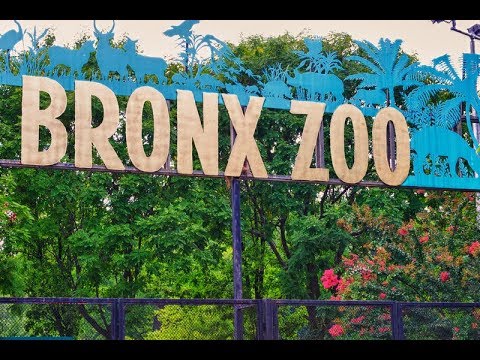
Best Camping Near North Brother Island
Nickerson beach campground.
The Nickerson Beach Campground is on Long Island, convenient to the beach and other attractions. It’s very close to Lido Beach, which is excellent for surfers. However, it’s only open from April to November.
There are 74 gravel sites, 66 of which have sewer. All spaces have electricity and water, and the current rate is around $71/night.

Battle Row Campground
This 44-acre campground lets you be close to commuter trains to New York City while enjoying a relaxed environment in Nassau County. They have 52 asphalt RV sites and 12 tent camping areas.
The Battle Row Campground is open year-round, but rentals are by reservation only. The last reported price was $29/night.
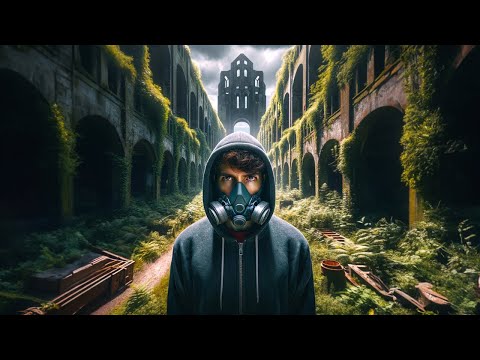
From Sickness to Sanctuary
North Brother Island is a small piece of land that holds a staggering tally of sicknesses. Photographers have been inside and posted photos that capture the eerie beauty that so often accompanies abandoned places.
For now, only the birds get close-up looks at the sites there.
Fortunately, the Bronx is rich with other places to visit, including a cottage where Poe lived and one of the world’s most famous zoos. Plus, you can camp in Poe’s healing Bronx air while still being close to the city.
Have you ever visited the Bronx? Tell us about your experience!
Discover the Best Free Camping Across the USA
To be honest with you, we hate paying for camping . There are so many free campsites in America (with complete privacy).
You should give it a try!
As a matter of fact, these free campsites are yours. Every time you pay federal taxes, you’re contributing to these lands.
Become a FREE CAMPING INSIDER and join the 100,000 campers who love to score the best site!
We’ll send you the 50 Best Free Campsites in the USA (one per state). Access the list by submitting your email below:

- New Construction + Condos
- Affordable Housing
- Negotiating + Financing
- How to Buy in NYC Guide

- Roommates + Landlords
- How to Rent in NYC Guide

- Staging + Open Houses
- Negotiations + Closings
- Getting Ready
- How to Sell in NYC Guide
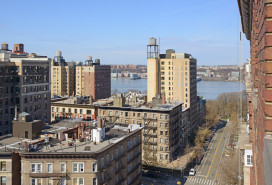
- Kids + Pets
- Neighborhood Intel
- Products + Test-drives
- Troubleshooting

- Small Spaces
- Small Projects + DIY
- Renovations
- Design + Architecture
- Products + Services
- How to Renovate in NYC Guide

- Boards & Buildings
- Advertise with us
- Sponsored Content

Find Your Next Place
Long off-limits, North Brother Island may finally open to the public
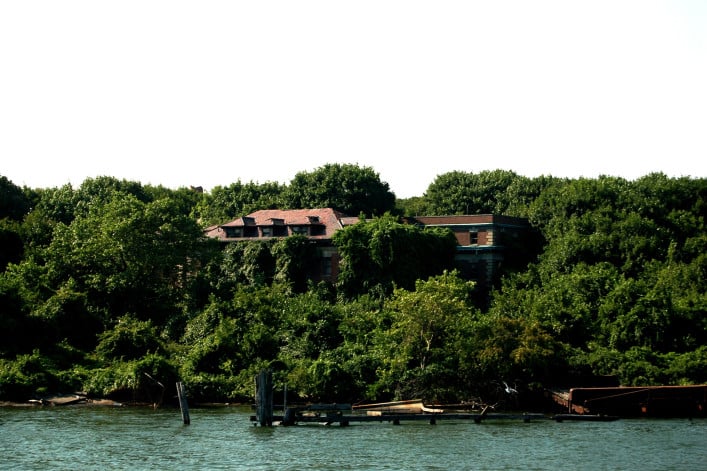
We recently explored the history of Hart Island , a speck of land north of City Island that's home to the city's largest potter's field; after several decades, it has recently begun accepting visits from the public. Now, it looks as though the city may open yet another long-mysterious islet to visitors.
Abandoned since 1963, North Brother Island could soon be opened on a limited basis to curious urban explorers, reports New York magazine . The City Council is working on a proposal to allow New Yorkers to check out the 20-acre space, which sits in the East River between Port Morris in the Bronx and Rikers Island.
First, though, the island needs a serious revamp: Its buildings have descended into decrepitude, and falling debris poses hazards to passersby. And on a less dangerous, but potentially unpleasant level, the area is also choked with vegetation, including poison ivy.
A history of illness
But what the island's buildings once housed is part of its draw, especially if you're a New York history buff. Like several of the city's other islands—including Hart and Roosevelt—North Brother's relative isolation made it the ideal place to build hospitals. Atlas Obscura recounts how the uninhabited island was purchased by the city in the late 1800s to erect Riverside Hospital, a facility for New Yorkers with contagious illnesses.
The hospital's most notorious patient was Mary Mallon, aka "Typhoid Mary," an asymptomatic carrier of the bacteria that causes typhoid fever. Due to her work as a cook, Mallon quickly spread the often-fatal disease among the families who employed her; the city ultimately quarantined her on North Brother Island, where she remained until her death about 23 years later. (Radiolab produced a podcast about Mallon's fascinating story, which you can listen to here .)
But even before Mallon's tragic end, North Brother Island was touched by disaster. According to the New York Public Library , on June 15, 1904, the PS Slocum, a boat chartered for a day trip around the city, caught fire. Passengers had to choose between plummeting into the East River or remaining on board, and over 1,000 people died. The captain steered the ship to North Brother Island, where it sank, though both employees and patients of the island's hospital helped pull survivors ashore.
(Not just) for the birds
Riverside Hospital closed not long after Mary Mallon's death; the island then became home to World War II veterans who were studying at city universities. In the 1950s, it housed a drug rehab facility for adolescents addicted to heroin, but in 1963, the New York article notes, it was closed due to corruption. Since then, the island has remained vacant, save for the occasional (and illegal) presence of intrepid visitors, and colonies of herons, egrets, and other birds .
Aside from becoming a wildlife sanctuary, nature has taken over in other ways. Back in 2011, blogger Richard Nickel, Jr. of the Kingston Lounge took a trip to the island—it's reachable by canoe, but note, it is legally off-limits—and found the island's properties in a state of advanced decay:
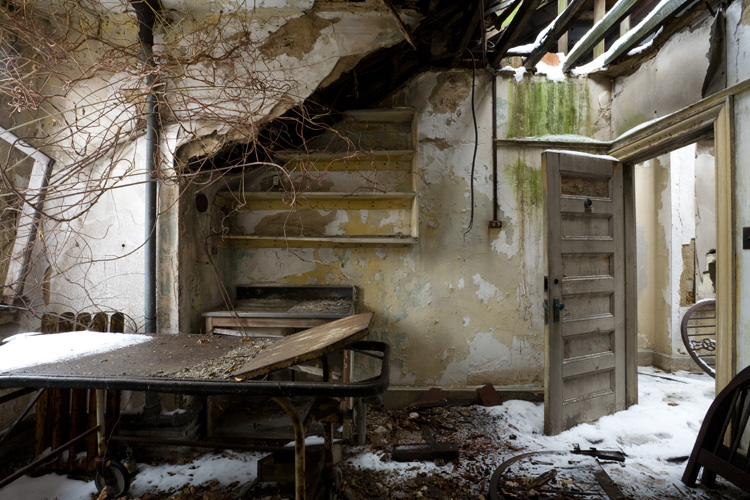
An examination room of the former hospital, via The Kingston Lounge
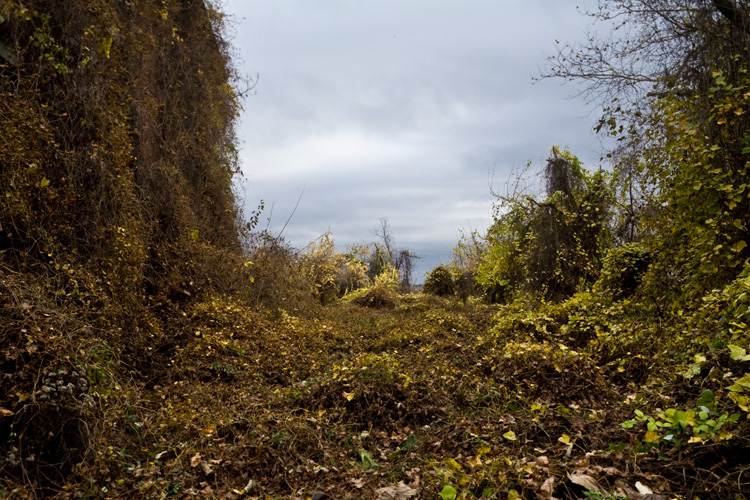
The hospital facilities are overgrown with kudzu in many places. The Kingston Lounge
The BBC reported on the island's history in 2014, and you can see many more images in the video below.
It's clear that North Brother Island requires a lot of TLC before it's ready to welcome New Yorkers: according to New York , the island needs a new dock, as well as significant repairs and restorations of its buildings, before the Parks Department is prepared to break its 50-plus years of isolation.
You Might Also Like
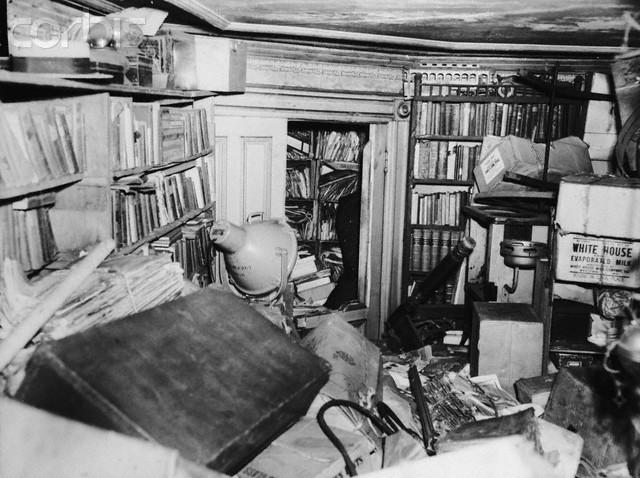
Alanna Schubach
Contributing editor Alanna Schubach has over a decade of experience as a New York City-based freelance journalist.

There's a mysterious, abandoned island less than a mile from Manhattan and almost no one is allowed to visit — here's what it's like
- North Brother Island is a 22-acre piece of land in New York City that has been abandoned since 1963.
- The island, which is next to the infamous Rikers prison, was a quarantine location 150 years ago.
- Business Insider visited the island and photographed the dilapidated state of its 25 buildings.

Less than a mile from Manhattan — one of the priciest and most densely populated places in the world — sits North Brother Island, a mysterious island that people abandoned more than half a century ago.
New York City owns the 22-acre plot, which pokes out of the East River between the South Bronx's industrial coast and a notorious prison: Rikers Island Correctional Center.
It's illegal for the public to set foot on North Brother Island and its smaller companion, South Brother Island, without permission from the New York City Department of Parks and Recreation. Even then, access is only granted in rare cases . Even birds seem to avoid its crumbling, abandoned structures.
In 2017, producers for the Science Channel obtained the city's permission to visit North Brother Island, and the crew invited Business Insider to tag along. The story of our small expedition premiered in season four of " What on Earth? " a popular TV show about satellite images. (Our segment closes out episode 12 .)
Here's what we saw and learned while romping around one of New York's spookiest and most forgotten places.
North Brother Island is accessible only by boat. Leaving from Barretto Point Park in the South Bronx is one of the quickest ways to get there.
Watch your step — the boat ramp is covered in slippery algae at low tide.
This small aluminum boat was our ride.
The East River was crawling with police, probably because Rikers Island Correctional Institute is less than a mile away — and they are wary of anyone visiting North Brother Island.
No one is permitted to visit the island without permission from the New York City Department of Parks and Recreation, which manages the site as a bird sanctuary. One of their escorts also has to tag along everywhere you go.
Source: NYC Parks
Pulling up to the island, we navigated around rotten dock supports. The ferry dock and its rusted derrick looked ready to collapse at any moment.
The island was first claimed in 1614 and inhabited in 1885, and its history is checkered with death, disease, and decay.
In June 1904, for instance, a steamship called the General Slocum burst into flames and sank in the East River. Though 321 people survived, the bodies of 1,021 passengers who died washed ashore for days.
Source: New York Public Library
The arc-shaped Hell Gate Bridge on the East River is visible from North Brother's western shore.
The island's buildings used to run on a coal-fired power plant. Workers loaded the bituminous fuel onto this dock — but during our visit, it was sinking, covered in kelp, and totally submerged at high tide.
Sea levels could rise by as much as 2.5 feet in the next 35 years around New York City. If and when a large hurricane rolls through as the waters rise, the surges will swallow the island's habitats, ecology, structures, and history.
Source: Business Insider
After we arrived on shore, we stowed camera equipment, food, and other supplies inside this old transformer vault.
It was falling apart, like everything else on the island, but was one of the most stable structures with a functional roof — and rain clouds immediately began to threaten our day trip.
Streets and sidewalks are almost unrecognizable due to the overgrowth.
But there are signs of previous habitation everywhere, like this corroding trash can.
Invasive kudzu vines, which come from Asia, crawl and infiltrate many nooks and crannies of the island.
The island sub-canopy is covered in native plants both small and impressively large.
One of the first buildings I saw was the morgue, seen right. The fractured chimney of a coal-fired boiler room, seen left, is also visible from miles away.
At every turn, the decay is both eerie and beautiful.
Parks and Recreation officials do not let anyone into most buildings, since they are in a dangerous state of disrepair.
You have to look where you're going, or you'll run into spider webs big enough to boggle the mind.
From the 1880s through 1943, the city quarantined people sick with highly contagious diseases on the island, including the infamous "Typhoid Mary" Mallon. Those who died were stored in the morgue.
Much of the equipment was left when inhabitants abandoned the island in 1963.
But signs of illegal visitation are peppered about, including this graffiti on a wall ball court.
Some facilities are almost unrecognizable. Ivy has completely choked out this double tennis court.
Rather than take the ferry each day, some hospital workers opted to live in the Nurse's Home. Bathtubs have fallen through the ceiling of the 40,000-square-foot Victorian-style mansion, which was built in 1905.
Coal-fired steam heated many of the island's dwellings.
The Staff House is one of the oldest and most dilapidated structures. It was constructed in 1885.
During our 2017 visit, it looked ready to collapse.
Further down the main road is the Male Dormitory.
It was also built in 1885, and has trees growing through its roof.
The dormitory became a nursery school for veterans' families who lived on the island during the post-World World II housing crisis, from 1946 through 1951.
After 1951 and until the island's abandonment, the building was used as a drug rehabilitation center.
So many structures hide among the wild vines, trees, and fronds.
It feels like wandering around an post-apocalyptic playground at times.
Few animals seem to live here, and a Parks and Recreation official said that mammals are practically nonexistent — no rats, chipmunks, or mice.
The largest building on the island was one of the last to be completed: the Tuberculosis Pavilion.
It is a sprawling four-story, 83,000-square-foot building that was designed to house people sick with tuberculosis, but then World War II broke out.
The $1.2 million facility was finished in 1943 and never treated a tuberculosis patient; instead, it housed World War II veterans.
It is a large, looming, and creepy building that we wanted to explore, but couldn't.
But like at many of the structures, we were able to peek through broken or missing windows.
The south end of the tubercular ward had a kitchen.
The island is a place few people would dare spend a night on, but it seemed more sad than spooky to me the more I explored it.
The structures, like the Physician's Home, built in 1926, were on the verge of collapse during our visit. But they were probably once beautiful, and might have even been useful today — had they been maintained.
The island struggled to find its purpose after a tuberculosis vaccine emerged in 1943, and soldiers found places to live on the mainland.
Owners of the island tried to reinvent it as a rehabilitation camp for troubled teens, from 1952 through 1963. But patients didn't get the help they needed when returning home after three- to five-month stays. The program was considered a failure.
Everyone left in 1963, and then the city took custody of the island. A lack of close management made it a looting grounds for vandals. To this day, the city has yet to figure out if and how it will let the public set foot there again.
North Brother Island might never reopen to the public, though: It's ground-zero for rising sea levels and storm surges. According to extreme climate-change projections, it may be entirely underwater by 2100.
This story is an update to the original version published on October 8, 2017.
- Main content
FILTER AMENITIES
Baseball Fields
Bocce Courts
Cricket Fields
Cycling Tracks
Fitness Station
Fitness Paths
Football Fields
Golf Courses
Hiking Trails
Historic Houses
Horseback Riding
Ice Skating
Indoor Pools
Kayaks/Canoes
Model Aircrafts
Nature Centers
Outdoor Pools
Paddleboats
Playgrounds
Roller Hockey
Running Tracks
Skate Parks
Soccer Fields
Spray Showers
Tennis Courts
Volleyball Courts
Waterfront Space
Zoos/Aquariums
FILTER PROXIMITY
Within .25 Miles
Within .5 Miles
Within 1 Mile
Within 2 Miles
Within 5 Miles
Within 10 Miles
All Distances
FILTER EVENTS
Explore NYC Parks was built by Andy and designed by Leigh .
Comments? Complaints? Tennis?
Get in Touch

Frequently Asked Questions
How many parks are there in New York City?
New York City has more than 1,700 parks, playgrounds, and recreation facilities across the five boroughs. Parks properties range from swimming pools to wetlands and from woodlands to skating rinks.
Do parks require permits to use a field or court?
It depends on the date and the park. You can visit the Field and Court Permit Requests page to make an online request for a permit.
Do I need a permit to play tennis?
Yes. You can find out more information on tennis permits here
What are the rules for using a city pool?
For everybody's health, safety, and protection, please review the following list of pool rules
Can I volunteer to help preserve our parks?
Yes! You can view volunteer opportunities here
Can I bring alcohol into the parks?
No, alcohol is prohibited in all parks.
I want to have a party in a park. Do I need a permit?
Yes, if more than 20 people are expected to attend, you will need a special events permit. Please visit the Special Events Permits and Applications page for more information.
Best Sunset in the City
Go to the Brooklyn Heights Promenade and watch the sunset with a perfect view of Manhattan. Pro Tip: Head to the nearby Brooklyn Ice Cream Factory and bring along some dessert.
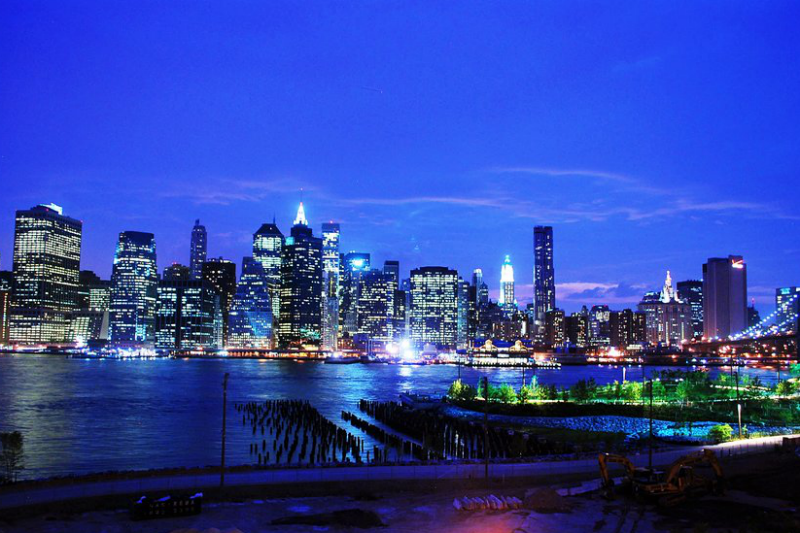
Sculptures by the Water in Queens
Hop on a train and head to Socrates Sculpture Park in Astoria. You can view some fantastic art along the water, take an art class or shop at the farmers market during the summer.
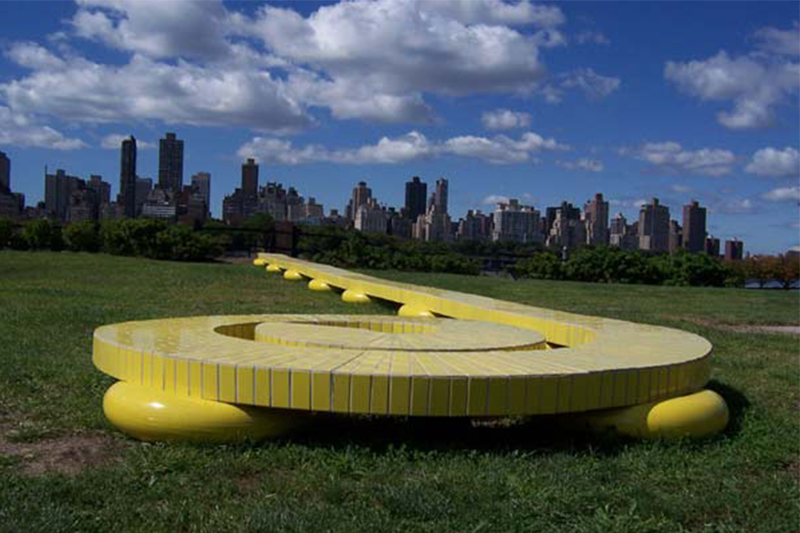
OK Magellan, find your own adventure
Cookie banner
We use cookies and other tracking technologies to improve your browsing experience on our site, show personalized content and targeted ads, analyze site traffic, and understand where our audiences come from. To learn more or opt-out, read our Cookie Policy . Please also read our Privacy Notice and Terms of Use , which became effective December 20, 2019.
By choosing I Accept , you consent to our use of cookies and other tracking technologies.
Site search
- Los Angeles
- San Francisco
- Archive.curbed.com
- Homes for sale
- Homes for rent
- Neighborhoods
- Architecture
- Development
- Affordable Housing
- Transportation
Filed under:
A 30-Photo Tour of the Abandoned North Brother Island
/cdn.vox-cdn.com/uploads/chorus_image/image/61331655/North-Brother-Island-15-Morgue-plant-from-dock.0.0.1450311800.0.jpg)
North Brother Island , the 13-acre piece of land that once housed a quarantine hospital, has long been a source of fascination for urban explorers and history nerds. Abandoned since the early 1960s, the island and its crumbling medical structures, famous for housing Typhoid Mary , have been taken over by nature. As a Radiolab producer once said , "North Brother Island is what will happen to the whole of our civilization when humanity is dead." Curbed tipster and urban photographer 2e recently journeyed to the island, only accessible by boat, and here now, we have 30 photos from his 7-hour adventure. "It's funny because often times you read about a place like this only to be let down after actually going," says 2e. "North Brother Island is not one of those places. In fact, to date, it has hands down been the most fascinating location I've been to."
· How to Get to North Brother Island [Radiolab] · North Brother Island [Wikipedia]
More From Curbed NY
- Curbed Is Moving to New York Magazine
- We Unearthed the 68 Best Rent Deals in NYC Right Now
- Landlords Lose Fight Against Rent Protections, Hotel Chelsea’s Latest Tenant Battle, and Other News
- City Hall Park Is Still Under Lockdown, the MTA Has a Man Cave, and Other News
- The Cheapest, Nicest Apartments for Sale in the West Village
- Bill de Blasio’s Plan to Close Rikers Is Crumbling
Loading comments...
Share this story.

Explore Essay
North Brother Island: The last unknown place in New York City
A photographer's visit to an island hiding in plain sight..
December 27, 2013
West side of North Brother Island from the Bronx | Click to enlarge. All photos by Christopher Payne, all rights reserved.
North Brother Island is among the most unexpected of places: an uninhabited island of ruins in New York City that hardly anyone knows; a secret existing in plain sight. It is both part of the city and a world apart from it. Its 20 acres sit low in the East River, just north of Hell Gate, with 25 or so buildings in various states of decay. As there is no public access, it’s most easily seen as you lift off the tarmac at LaGuardia or as you drive up the New England freeway through the Bronx.
North Brother Island came into prominence in the late 19th century, when public health issues of an exploding population regularly made headlines. Like other islands in the harbor, it was perfectly suited as a buffer against contagions, and from the 1870s through the 1930s it was used primarily as a quarantine hospital (the infamous Typhoid Mary was confined there). After WWII it provided a temporary home for veterans, and from the 1950s it was used as a juvenile drug treatment center until its closure in 1963. Over the years, new uses have been proposed for the island, but by and large it has been forgotten. Thanks to a threatened species of shorebird, the black-crowned night heron, North Brother has been designated as conservation land, to protect nesting grounds for the herons, which have unwittingly helped to preserve the island’s forgotten fragments of New York’s history.
Maintenance Building workshop
Since 2006, with permission from the New York City Department of Parks & Recreation, I have been one of a few photographers allowed on the island, and my photographs comprise a comprehensive record of the buildings and its evolving landscape over many seasons. Devoid of human habitation for over half a century, the buildings, streets, and facilities are in ruins, reclaimed by lush vegetation. My photographs of the island, all of which were taken with a large format view camera, convey the beauty and significance of this wild landscape that brims with intrigue and paradox.
A NYSCA grant, sponsored by The Architectural League, supported the production of my latest book, North Brother Island: The Last Unknown Place in New York City . The fascinating history of this unique place touches upon public health policy, urban planning, historic preservation, and environmental conservation. By bringing the island to public consciousness, I hope to give renewed civic presence to a long-inaccessible part of the city.
In 2012, the League’s Urban Omnibus interviewed Christopher Payne about his work, the intersections between his architectural background and artistic practice, and the role photography can play in reminding us of our disappearing histories. In that interview, Payne discussed his photography of North Brother Island. What follows is an excerpt from that conversation:
Payne : There’s a book called The World Without Us by Alan Weisman that imagines what would happen to the planet if humans disappeared. He dedicates a chapter to New York City that might as well be captions for these photos. The series isn’t just about the abandoned buildings, it is about the universal story of man’s attempts to live in and alter the natural world, and how nature always reasserts herself in the end.
Architects are taught to think about how buildings will age, but we never think how they will fall apart. People assume it takes centuries. But on North Brother Island, that jump from human habitation to unrecognizable ruin is just a few decades.
When you see historic photographs of North Brother, you see this huge, open, well-maintained campus. This was not just a cluster of buildings in a wooded landscape. But we don’t think about the parts we can’t see, buried just beneath our feet—the streets, the fire hydrants, the lampposts. And this is an island that used to be very much connected to the city. There were ferries running back and forth, for people who worked at the hospital, or for the families that lived there after WWII. We’re looking at things that had so much meaning just fifty years ago, and now, even in a city as big as this, no one remembers them except maybe one or two people who actually went to school there, who were on the island when it was an active community . . . All it takes is one generation for that kind of public knowledge to be lost. We assume history will be remembered, but that’s not always the case. I think photographers are acutely aware of that.
All photographs by Christopher Payne. All rights reserved.
Christopher Payne specializes in the documentation of America’s vanishing architecture and industrial landscape. Trained as an architect, he is fascinated by how things are purposefully designed and constructed, and how they work. His first book, New York’s Forgotten Substations: The Power Behind the Subway, offered dramatic, rare views of the behemoth machines that are hidden behind modest facades in New York City. His second book, Asylum: Inside the Closed World of State Mental Hospitals, which includes an essay by the renowned neurologist Oliver Sacks, was the result of a seven-year survey of America’s vast and largely shuttered state mental institutions.
Payne’s forthcoming book, North Brother Island: The Last Unknown Place in New York City, explores an uninhabited island of ruins in the East River. Payne’s photographs invoke the former grandeur of the site over different seasons, capturing hints of buried streets and infrastructure now reclaimed by nature, while also offering a unique glimpse into a city’s future without people.
Payne’s recent work, including a series in progress on the American textile industry, has veered away from the documentation of the obsolete towards a celebration of craftsmanship and small-scale manufacturing that are persevering in the face of global competition and evolutions in industrial processes. Nearing completion is One Steinway Place, a tour through the famous Steinway & Sons piano factory in Astoria, Queens. Here a team of skilled workers creates exquisite instruments considered to be some of the finest in the world. Payne captures moments of the choreographies of production and assembly, and inspects the parts and pieces of the instruments that will never be visible outside of the factory, telling a story of intricacy, precision, and care he fears is becoming all too rare in the American workplace. For more information about his work, visit chrispaynephoto.com .
Christopher Payne
Horizontal light: lewerentz, aalto and the nordic landscape.
Thomas W. Ryan explores the seminal works of Alvar Aalto and Sigurd Lewerentz in Sweden and Finland.
Lina Bo Bardi’s return to Salvador
Angela Starita discusses the architect's (mostly unrealized) plan to restore the historic city center of Salvador, Brazil.
Material tour de force: The work of Eladio Dieste
Julian Palacio visits Uruguay to examine the material and structural innovation of the work of engineer Eladio Dieste.
- North America
- The Mystery Of Nycs Forgotten...
The Mystery of NYC's Forgotten North Brother Island

Travel Editor
New York City is a juxtaposition of old and new; a city where modern skyscrapers are set aside historic buildings dating back to the 1600s. There exists pockets of NYC where ghosts lurk, and on the forgotten island of North Brother—resting between the Bronx and Rikers Island—a haunted past remains.
Back in the 1880s, North Brother Island was purchased to house the Riverside Hospital where patients with contagious diseases were meant to be treated. Of the many people to arrive at Riverside, the most famous was Mary Mallon, who would go down in history as “Typhoid Mary” and, according to Atlas Obscura , carry the “unfortunate distinction of being the United States’ first documented asymptomatic carrier of the bacteria that causes typhoid fever.”
Typhoid Mary, who had worked as a cook in New York before being quarantined on North Brother Island, was seemingly in perfect health. Later tests proved though that Mallon carried the typhoid bacteria that had infected seven of the eight families she had worked for. Refusing to believe that she was in fact ill, Mallon left Riverside Hospital and continued to cook, only spreading the disease further. In 1915, Typhoid Mary was forcibly quarantined once again, living out her days on North Brother Island until her death in 1938.

After Mallon’s death, Riverside Hospital shuttered its doors until the Second World War, when the hospital sprang back to life to house war veterans. In the 1950s, after the war, Riverside Hospital was reincarnated once more as a drug treatment facility for heroin addicts who were allegedly locked in rooms until they were clean. By the 1960s, Riverside Hospital had run its course, becoming corrupt and eventually being forced to close.
Today, the remains of Riverside Hospital are left to the elements on North Brother Island. The hospital’s ruins—once teeming with life—are now eerily deserted, wrapped in overgrown shrubbery and enveloped by the woods. North Brother is inaccessible to visitors today, with NYC Parks only granting access to the island for researchers and, on occasion, press.
As the endless flow of New York life builds up around North Brother, the island serves as an endless reminder of the ghost of the city’s past.
Since you are here, we would like to share our vision for the future of travel - and the direction Culture Trip is moving in.
Culture Trip launched in 2011 with a simple yet passionate mission: to inspire people to go beyond their boundaries and experience what makes a place, its people and its culture special and meaningful — and this is still in our DNA today. We are proud that, for more than a decade, millions like you have trusted our award-winning recommendations by people who deeply understand what makes certain places and communities so special.
Increasingly we believe the world needs more meaningful, real-life connections between curious travellers keen to explore the world in a more responsible way. That is why we have intensively curated a collection of premium small-group trips as an invitation to meet and connect with new, like-minded people for once-in-a-lifetime experiences in three categories: Culture Trips, Rail Trips and Private Trips. Our Trips are suitable for both solo travelers, couples and friends who want to explore the world together.
Culture Trips are deeply immersive 5 to 16 days itineraries, that combine authentic local experiences, exciting activities and 4-5* accommodation to look forward to at the end of each day. Our Rail Trips are our most planet-friendly itineraries that invite you to take the scenic route, relax whilst getting under the skin of a destination. Our Private Trips are fully tailored itineraries, curated by our Travel Experts specifically for you, your friends or your family.
We know that many of you worry about the environmental impact of travel and are looking for ways of expanding horizons in ways that do minimal harm - and may even bring benefits. We are committed to go as far as possible in curating our trips with care for the planet. That is why all of our trips are flightless in destination, fully carbon offset - and we have ambitious plans to be net zero in the very near future.

Architecture
Rising from the ashes: how cities are reborn after disaster strikes.

Film & TV
The rise and rise of new york’s independent film scene.


The Revolutionary War’s Biggest Battle Went Down in Park Slope, Brooklyn

Food & Drink
Six female entrepreneurs dish on how to grow a food business in nyc.

One New Yorker Is Tackling Toxic Dating With Instagram Illustrations

NYC Chefs Dish On What It’s Like To Run a Business With a Significant Other

Brooklyn’s Matzo Project Takes the Passover Staple From Flat to Fab

See & Do
The most iconic landmarks in soho, new york.

Entire Museum Dedicated to Dogs Opens in Manhattan

Storytown's Guy Story With His Ultimate Sounds of Soho Playlist

New Yorkers Can Give Curling a Spin in Prospect Park

Health & Wellness
‘the class’ helps you work through your issues while working out your body, culture trip spring sale, save up to $1,100 on our unique small-group trips limited spots..

- Post ID: 1585474
- Sponsored? No
- View Payload
- Our Editors
- Staff Fall 2019
- Staff Fall 2018
- Staff Fall 2016
- Staff Fall 2014
- Staff Fall 2012
- Staff Fall 2011
- Staff Spring 2011
- Staff Fall 2010
- Staff Spring 2010
- Staff Fall 2009
- North Central Bronx
- Northwest Bronx
- Southern Bronx
- Public Safety
- Housing Injustice
- Inequity in the Greenest Borough
- Sizing up Stop and Frisk
- The 12 Percent
- Risky Real Estate
- Toxic School
- Hate Crimes
- Election 2010
- Food and Beyond
- Health Care Reform
Access to North and South Brother Islands still in question
by Savannah Jacobson
North and South Brother Islands from Barretto Point Park. The North is on the right closer to the foreground, the South, slimmer than its kin, is on the left. Photo credit: Savannah Jacobson
The East River is peppered with small islands filled with larger-than-life New York City history.
Two of them sit at the northern mouth of Hell Gate, a stone’s throw away from Barretto Point Park in Hunts Point. They provide some of New York City’s most enigmatic storytelling: in the north lies the old hospital that once housed Typhoid Mary, and the southern island harbored rum runners during Prohibition.
Today, if any Bronx adventurer wants to visit North or South Brother Island, they’ll probably have to find a Parks Department-approved scientist with spare room in their kayak. An eagerness to find the elusive northern dusky salamander , or being deemed the Greenest New Yorker by the state government might also help. Erik Baard, a regular explorer of South Brother Island and founder of environmental group HarborLAB, falls into both camps.
To adventurers like Baard, the island’s allure remains about the scrappiness required to get there. In the mid-2000s, he bonded with a Parks Department official over their search for the rare swamp-loving salamander. Now, all he needs to get to South Brother Island is some advanced notice.
“In the early days it was a little bit more radical seeming,” said Baard. “But now I’m 50 and I have white hair, and they know I’ve been doing it, so it’s fine.”
The twin isles reside between Rikers Island and the Bronx mainland, their upkeep reliant on a mired-down government that wrestled the land out of the hands of New York elite.
While North Brother Island has been uninhabited since 1963, only a scarce few have seen South Brother Island’s light of day since 1909.
The city has intended to make North Brother Island publicly accessible for decades, but the effort has stalled—the Parks Department only allows for visitation from academics and scientists. And South Brother Island remains strange and vacant, a land strictly reserved for some of the East Coast’s most exotic fauna, or the occasional message in a bottle.
On one of his earliest ventures, Baard discovered a bottle with a note inside dating back to the ‘80s.
“He had thrown it from Hunts Point,” said Baard. “It washed up on the island and stayed there. That’s how stable things were before Hurricane Sandy, it hadn’t left the East River for 30 years.”
Indeed, stability defines the history of South Brother Island.
In the early 20 th century, Col. Jacob Ruppert, a brewer and owner of the New York Yankees, owned the island. Stories of booze smuggling in the ‘30s run rampant, but the island’s reigning tale surrounds the intrigue that stems from its emptiness.
Meanwhile, North Brother Island’s history is colored with tumult and tragedy, until it reached its final fate: entanglement in the nests of bureaucracy.
Parks Department sign in Barretto Point Park commemorating the shipwreck. Photo credit: Savannah Jacobson
In 1904, a steamship carried German churchgoers from the Lower East Side to Long Island for a Sunday School jaunt. Somehow, a spark lit in a storage room that kept barrels of oil. The fire spread through the ship just as it reached Hell Gate. The ship captain hurtled forward to North Brother Island, but over a thousand passengers had already perished.
Several years later, Mary Mallon, an Irish immigrant working as a cook, tested positive for tuberculosis. The Department of Health forced her into quarantine on North Brother Island where, apart from a five-year reprieve, she would live the rest of her life in isolation. The lore of Typhoid Mary’s quarantine attracts the city’s lovers of all things creepy, medical, and abandoned.
An illustration of Mary Mallon featured in a 1909 edition of defunct newspaper “New York American.” Photo credit: Museum of the City of New York, on Instagram
Still etched into the walls of a decrepit hospital lie an inmate’s infamous words: “Help me I am being held here against my will.”
A haunting wall carving in an abandoned hospital on North Brother Island. Photo credit: Ian Ference/The Kingston Lounge
Following the close of World War II, the city rotated through purposes for North Brother Island, from veteran housing to youth rehabilitation centers, until finally shuttering everything in 1963, vacating the island indefinitely and leaving behind 26 empty structures.
Now, after sitting uninhabited for decades, traveling to North Brother Island requires good timing, a permit from the Parks Department, and an advanced degree or elected position.
“We are currently only accepting requests to visit with a rigorous academic focus and institutional association,” said Parks Department analyst Tely Renata. All visitors are prohibited during bird nesting season, from late March to late September.
This restrictiveness contrasts the political rhetoric surrounding North Brother Island.
“What’s wrong with making North and South Brother Islands accessible?” asked Bronxite Jonathan Marin in a Facebook group.
The answer? It depends on who you ask.
Councilman and former parks chair Mark Levine visited the island in 2014, setting off rumors about North Brother Island opening to the public.
“I hope you wouldn’t have to be a city councilman to see this,” he told Gothamist at the time.
Levine’s visit coincided with a periodic study from the University of Pennsylvania’s School of Design to create a responsible plan that would allow for public visitation. The study, released last year, exposed the tension at the heart of the fight over who gets to visit North and South Brother Islands: ecologists are concerned with environmental protection and preservation, while community groups see opening the island as a way to increase access to green space and potentially provide jobs in the South Bronx.
“I am very much opposed to making North and South Brother Island any sort of public park,” said Baard. “I think we’ve eaten up enough land in New York City as a species. I think it’s not asking too much to leave some of it aside for other species.”
At the same time, Baard is sympathetic to the lack of reachable green spaces in neighborhoods like East Harlem, where Randall’s Island is counted as open space: “That’s obscene in a lot of ways to say, ‘Don’t worry, you’ve got your green space, just walk all the way there.’”
The University of Pennsylvania study ultimately recommended a trial period of limited and controlled public access.
“It requires thinking in different terms about what open to the public means,” said Randall Mason, the study’s principal investigator and Associate Professor of historic preservation at the University of Pennsylvania. “It would certainly be seasonal and that’s in keeping with the ecological preservation imperative. It would mean to be deliberate and intentional about the usage of the park.”
Since the study was published, the city has not shown much progress in opening the island. Still, Mason has faith that the Parks Department and a coalition of private partners will find funding for a successful pilot period of public access.
“Parks funding will always be the bottleneck. As long as that could be solved, there are avenues that could be explored.”
Signage in Barretto Point Park from a coalition of groups that helped New York City purchase South Brother Island. The island can be seen on the left. Photo credit: Savannah Jacobson
As for South Brother Island, the Trust for Public Land, a conservation non-profit, negotiated the land from private ownership into full oversight by the Parks Department in November 2007. U.S. Rep. José Serrano, whose district includes the islands, worked with a coalition of environmental-minded nonprofits to secure $2 million in federal grant funds to facilitate the land transfer and preserve the island as a bird sanctuary.
For now, in a borough where locals’ needs are rarely met and on two islands that have lived in obscurity for centuries, it seems that even more so than lacking a PhD in marine biology, boating equipment, or wings, public opinion and bureaucracy are still the biggest impediments to ever reaching the islands.
Baard doesn’t see the problem. Some places, he says, should be left untouched.
“I don’t romanticize things as much.”
Mapping inequity
More stories.
- © Roadtrippers
- © Mapbox
- © OpenStreetMap
- Improve this map

North Brother Island
New York , New York USA
- Independent
- Not Wheelchair Accessible
- No Public Restrooms
- Outdoor Seating
- More in New York
“An abandoned island, with a hospital, in the middle of New York City”
This place is on private property. Listing for informational purposes only. Please do not visit without express permission from the land owner. Ever wonder what Earth will look like 50 years after the apocalypse? Probably a bit like NYC’s North Brother Island. It’s lain empty in the East River since the 1960s- even the Black-Crowned Night Herons who lived on this once-bustling island have abandoned it. It all started in 1885, when Riverside Hospital moved there from what is now known as Roosevelt Island. Riverside primarily treated the victims of smallpox and other highly contagious diseases, so putting all of them on an island away from civilization was ideal. The first known asymptomatic carrier of typhoid, Typhoid Mary, was a guest of the hospital for over two decades. As a cook who carried the disease but displayed no symptoms, she infected over 50 people, three of whom died. She died there in 1938 and the hospital closed shortly after. In the mid-1940′s, it served as overflow housing for WWII vets and their families while they attended local college classes. This didn’t last long, as the housing shortage was quickly reversed and the island was used as a center to treat teen drug addicts in the 1950s. Heroin addicts were locked in empty rooms while they went through withdrawal, some leaving their writings on the walls. In the 60s, the corruption and bad treatments caught up to the rehab center and again the building was closed, never to be reopened or reused. Today, it’s a sanctuary for birds and the island is off-limits during nesting season. The best way to score a chance to visit is to contact the NYC Audubon Society or the parks department- you may have to charter a boat, and since there’s no dock, you’ll have to essentially shipwreck yourself onto a sandy area and scramble to dry land. All the trouble is worth it, though, to explore the haunting beauty of North Brother Island. -Roadtrippers North Brother Island is a small island in the East River situated between the Bronx and Riker's Island, New York City. Once the site of a hospital, it is now uninhabited and designated as a bird sanctuary. It measures approximately 400 m by 250 m. Its smaller companion, South Brother Island, is a short distance away. Together, the two Brother Islands, North and South, have a land area of 20.12 acres. The island was uninhabited until 1885, when Riverside Hospital moved there from Blackwell's Island (now known as Roosevelt Island). Riverside Hospital was founded in the 1850s as the Smallpox Hospital to treat and isolate victims of that disease. Its mission eventually expanded to other quarantinable diseases. The island was the site of the wreck of the General Slocum, a steamship which burned on June 15, 1904. Over 1,000 people died either from the fire on board the ship or from drowning before the ship was beached on the island's shores. Typhoid Mary was confined to the island for over two decades until she died there in 1938. The hospital closed shortly thereafter. After World War II, the island housed war veterans who were students at local colleges, along with their families. After the nationwide housing shortage abated, the island was once again abandoned. In the 1950s a center opened to treat adolescent drug addicts. The facility claimed to be the first to offer treatment, rehabilitation, and education facilities to young drug offenders. Heroin addicts were confined to this island and locked in a room until they were clean. Many of them believed they were being held against their will (as one person wrote on the wall). By the early 1960s widespread staff corruption and patient recidivism forced the facility to close. Now a bird sanctuary, the island is currently abandoned and off-limits to the public between the months of March to October. Most of the original hospitals' buildings still stand, but are heavily deteriorated and in danger of collapse. A dense forest conceals the ruined hospital buildings, and from the 1980s through the early 2000s it supported one of the area's largest nesting colonies of Black-crowned Night Heron. However as of 2008 this species has abandoned the island for unknown reasons. In 1991, the rock band Mercury Rev used the island to shoot a music video for the song "Chasing A Bee" from the record "Yerself Is Steam". It was directed by Jens Jurgensen and Jim Spring. North Brother Island was featured in episode 8 ("Armed and Defenseless") of Life After People on the History Channel. It was used as an example of what would happen to structures after 45 years without humans. RadioLab visited the island and provided these tips for getting there: "1) Contact the parks department. They don’t even let themselves visit the island most of the time. March to October is off limits. That’s when the herons nest. 2) If the parks department gives you permission, you have to charter a boat, which can be really expensive. To make it more affordable, find other folks who need to visit and split the cost with them. 3) Thing is, a big group requires a big boat and a big boat can’t dock on the island. There’s no dock. We had to tie off on a rotting piling, motor over in a smaller boat, three by three, and beach ourselves onto the sand. In short, to get to North Brother Island, you have to mildly shipwreck yourself."
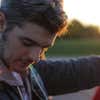
Reviewed by Greg Newkirk
- 314 Reviews
- 374 Helpful
Just a heads up, this place is totally awesome, but it's only open for a few months a year. It's a nature preserve for the local bird populations, so between the months of March and October (nesting season), the park is totally off-limits to visitors. Outside of those months, you can apply for a permit to visit the island, but you have to provide your own boat. Happy hunting!
Be the first to add a review to the North Brother Island.
- Sun - Sat: 12:00 am - 11:59 pm
Problem with this listing? Let us know .
Has RV parking changed? Let us know .
- Check Parking
- Unavailable Pets Allowed
- Unavailable Restrooms
- Unavailable Wifi
- Unavailable Wheelchair Accessible
- Unknown Credit Cards Accepted
- Check Outdoor Seating
Parking, Dining
Nearby Hotels
Related trip guides, the top things to do on an i-95 road trip, the top things to do on a u.s. route 20 road trip, the top things to do on an east coast road trip, the top things to do on an i-80 road trip, keep exploring with the roadtrippers mobile apps..
Anything you plan or save automagically syncs with the apps, ready for you to hit the road!
Connect with us and hit up #roadtrippers
Tall tales, trip guides, & the world's weird & wonderful.
- Roadpass Digital
- Mobile Apps
Business Tools
- Partnerships
Get Inspired
- Road trip ideas by state
- National parks
- Famous routes
- Voices from the Road
Fresh Guides
- The ultimate guide to Mammoth Cave National Park
- The Ultimate Guide to Badlands National Park
- Route 66 Leg 2: St. Louis to Tulsa
- Route 66 Leg 1: Chicago to St. Louis
- Route 66 Leg 3: Tulsa to Amarillo
- Top 10 things to do in Ohio
- Offbeat Road Trip Guides
- Road Trip USA
- Scenic Routes America
- National Park Road Trips
- Terms and Conditions
NORTH BROTHER ISLAND
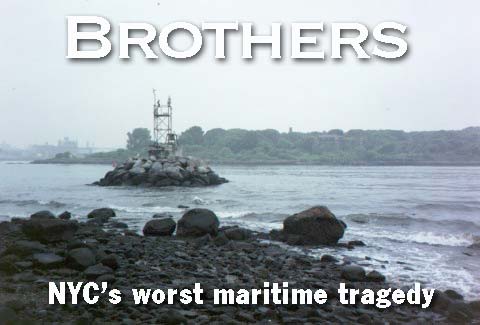
South Brother Island (foreground), North Brother Island (background)
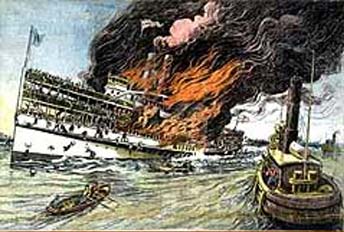
On June 15, 1904, the General Slocum, an excursion vessel on the way to Long Island for a church picnic outing, burst into flames in the East River. Over 1200 lost their lives.
Slocum Captain William Van Schaick drove the vessel toward North Brother Island, one of two small islands in the East River between Port Morris, Bronx, and Riker’s Island.
Van Schaick’s decision to beach the Slocum on North Brother was a dubious one; there were closer piers at Port Morris, the southeastern tip of the Bronx. Since there were numerous wooden piers and oil tanks there, however, some historians say Van Schaick took the only course of action available to him. More outrageous was the fact that the Slocum was hardly prepared for any mishap as corrupt inspectors had declared the Slocum seaworthy despite:
–The ship’s six lifeboats were not only tied down but painted to the deck
–Life belts were nailed to the overhead in rusty wiring and were 13 years old; they had deteriorated such that the cork had turned to powder, dragging down anyone who wore them to the bottom; some were filled with cast iron
–Fire hoses were rotten and frayed and burst apart when water was run through them
–Some of ship’s crew panicked
Steamboat company officials were tried but not convicted, even though proof was obtained that the owners had bribed the inspectors. Only Van Schaick served any prison time, 3.5 years at Sing Sing. He was pardoned by President Taft in 1912.
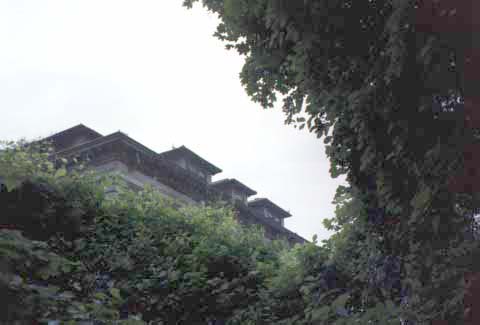
North Brother Island, where the Slocum was beached, is now a windswept, barren place visited now only by wading and migrating birds and urban explorers, like K. Jacob Ruppert, who kayaked out to North Brother with the Natural Resources Group of the NYC Department of Parks and snapped the shots of it you see on this page. North and South Brother are in the East River, east of Port Morris, Bronx and west of Rikers Island. The Brothers are officially off limits.
The islands were first sighted by Europeans in the early 1600s. In 1614 they were claimed for the Dutch West India Company by Captain Adriaen Block, but remained undeveloped for the next two hundred years. According to Other Islands of New York City chroniclers Sharon Seitz and Stuart Miller, brewery owner Colonel Jacob Ruppert (1867-1939) owned a summer home on South Brother Island from 1897 to 1907. The Colonel later owned the New York Yankees, and his great-grandnephew, K. Jacob Ruppert, took the photos of North Brother seen on this page.
New York City operated Riverside Hospital on North Brother beginning in 1885. In that era, NYC placed typhus, TB, cholera, yellow fever and smallpox victims on North Brother and Blackwell’s (now Roosevelt) Islands. Riverside was subsequently expanded to accept more and more patients from waves of disease plagues in 1886, 1892 (smallpox), 1893 (typhus), 1903 (TB) and 1916 (polio). Mary Mallon, a housekeeper and cook who carried typhoid (a bacterial disease causing high fever and acute diarrhea) but was unaffected by it, had spread the disease to estimated hundreds, causing anywhere from three to 50 deaths; she resisted capture and eluded investigators off and on between stints at Riverside between 1907 and 1915. In that year the City Board of Health declared her a public menace, and she was sent to North Brother for the remainder of her life. She worked in the hospital laboratory and was occasionally allowed to briefly travel to the mainland. She died in 1938.

Island ruins. Note the heron nest at the top of the smokestack.
Riverside Hospital has been reclaimed by nature
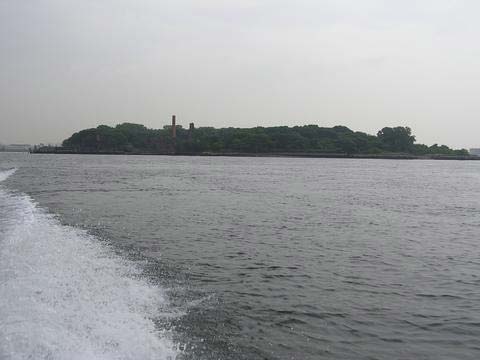
Approaching North Brother by boat.
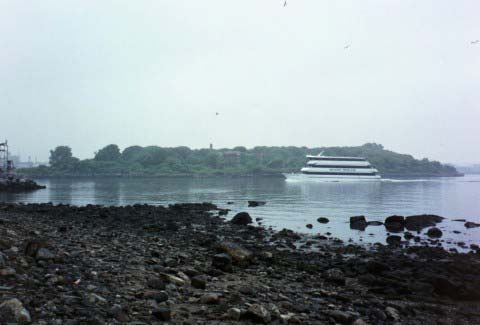
A modern excursion boat sails through the short strait between South and North Brother.
Such is the Brothers’ legacy to the Slocum tragedy. Proper memorials can be found in two of NYC’s boroughs:
Many Slocum victims are buried in Lutheran Cemetery, a vast expanse in Middle Village, Queens. Most of them were from the Lower East Side, a neighborhood then known as Kleindeutschland: Little Germany. In the years after the tragedy, most of the traumatized German-Americans in the neighborhood would move away. Only a few German inscriptions on buildings, such as Freie Bilbliothek u. Leshalle (free library and reading room) on the Ottendorfer Library at 2nd Avenue and East 9th Street) are reminders of Kleindeutschland.
The Lutheran Cemetery Slocum monument was unveiled in 1905, exactly one year after the fire, by the youngest survivor, two-year old Adella Liebenow, who lived until January 2004 when she was 100. The inscription on the front of the stone is repeated in German on the back.

The following year, 1906, a smaller monument was erected in Tompkins Square Park (between Avenues A and B and East 7th and 10th Streets, just north of Kleindeutschland): a small 9-ft. stele made of pink Tennesee marble, featuring a relief picturing two children looking seaward, sculpted by Bruno Louis Zimm. Funds were provided by the Sympathy Society of German Ladies. In 1991, it was restored by the NYC Parks Department with funds from SUNY-Maritime College in Throgs Neck, Bronx. The children are described: “They were earth’s purest, children young and fair.”
Frederick MacMonnies’ equestrian statue of General Henry Warner Slocum (1827-1894) can be found on Plaza Street East at Brooklyn’s Grand Army Plaza.
Slocum, a West Point graduate, was commissioned a colonel of volunteers in the Union Army after the Civil War broke out. He commanded forces at Bull Run and Gettysburg and commanded a corps of Sherman’s army in the March to the Sea. He practiced law in Brooklyn after the war, and served in the House of Representatives from 1869-1873.
MacMonnies’ statue was installed in 1905, a year after the steamboat tragedy.
Fireboat Hewitt
There is one more story to tell regarding the General Slocum tragedy. Initially fireboat Zophar Mills pursued the Slocum as the doomed ship steamed toward North Brother. Another fireboat, the Abram S. Hewitt , initially stopped at the East 67th Street pier to pick up New York City Fire Department Chief Edward F. Croker. The Hewitt was unable to arrive until the Slocum had been beached at North Brother.
The fireboat, named for NYC mayor Abram Stevens Hewitt (1822-1903) was built by New York Shipbuilding in Camden, NJ and launched the year the mayor died; she served in the NYC fireboat fleet until 1958. It was the last coal-burning fireboat in operation.
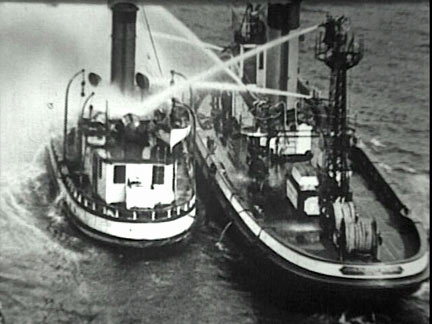
Fireboat John Purroy Mitchel in action spraying the Halcyon.
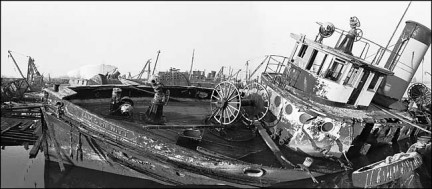
Today the Abram S. Hewitt , one of the last links to the burning of the General Slocum, is itself sinking in the Rossville Boatyard in Staten Island. Rossville chronicler Shaun O’Boyle took the picture at left in 1987 and the second in 2003, and the Hewitt has listed noticeably since (its name plate can be made out faintly through the 72 DPI resolution).
A common thread runs through the General Slocum fire, the Triangle Shirtwaist Factory fire in 1911, and the Malbone Street Wreck of 1918. All three of these events are emblematic of the absolute indifference to life and limb that US business had in that era. The Slocum was appointed with worthless safety devices; the shirtwaist factory owners callously locked the doors to prevent its immigrant workforce from leaving work early or pilfering any items; and Brooklyn Rapid Transit responded to a strike by using novices as motormen. Today, dangerous working conditions persist nationwide despite more governmental strictures, and there are still sweatshops; laxly followed regulations and incompetent seamen contributed to 2003’s Staten Island Ferry tragedy.
The Donald Trumps of the world don’t ride the Staten Island ferry, and they weren’t taking steamship excursions on boats like the Slocum in 1904.
Ship Ablaze , Edward T. O’Donnell, Broadway Books 2003
Waterfront: a Journey Around Manhattan , Philip Lopate, Crown 2004
Other Islands of New York City , Sharon Seitz and Stuart Miller, Countryman Press, 2nd ed., 2001
“Remembering the Slocum disaster, a century later”, Bonnie Rosenstock, Downtown Express, June 11-17, 2004
North Brother Island photos: K. Jacob Ruppert
Kingston Lounge in North Brother Island
MORE OF THE REAL SUBWAY
Luquer street’s missing “e”.
How about some nit-pik? In the foreground of one of the photos above, there is a partial image of a TRAILING boat-wake and showing a second boat following on. Prominent in the background of the photo is clearly identifiable as “North Island”, which the boats obviously are leaving. Caption: “Approaching North Brother by boat.”
I would be interested in knowing if any other editors out there have let you know about this. Or, perhaps a more appropriate question would be, “Am I the first and/or only nerd that noticed?” Use the Email address above. Thank you.
Purely in jest… Greg
There is a photo of the aftermath of the General Slocum tragedy that can be viewed on Wikipedia here:
https://upload.wikimedia.org/wikipedia/commons/4/4c/Recovery_of_victims_from_the_General_Slocum.jpg?download
The photo appears to have the same buildings and smokestack in the background…
jdns fsf xsfesfs
Leave a Comment Cancel Reply
Save my name, email, and website in this browser for the next time I comment.
This site uses Akismet to reduce spam. Learn how your comment data is processed .

- Advertise with FNY
- Contributors
- FNY 2023 Tour Schedule
40-01 Little Neck Parkway 24A Little Neck, NY 11363
@2019 - Forgotten New York. All Right Reserved.

About North Brother Island
Quick links, introduction.
Stepping into the interior of North Brother Island is like entering another world. In this seemingly alternative dimension, it’s as if you’ve been simultaneously transported to the island’s actual tragic past as well as a possible post-apocalyptic future for our civilization.
At least that’s how I imagine it feels to walk among the ruins of Riverside Hospital, located on a twenty-acre, forested atoll in New York City’s East River. Because access to the island, now a federally-protected bird sanctuary, is restricted, I’ve never been there.
Instead, I’ve learned everything I could from those who’ve been fortunate enough to experience the surreal, decomposing quarantine facility firsthand, and gracious enough to then share it with the rest of us. As nature continues its destruction of the remaining evidence of the quarantine facility, where thousands died and many more suffered, all that will remain will be the accounts of those who’ve been there, and their photographs and videos.
The history of North Brother Island—both rich and dark—belongs to us all. And it’s even more relevant now that we’ve been living through our own generation’s pandemic. I invite you to explore the resources I’ve aggregated here as well as contact me with any additional information I can add (and use in The Vines Series).
Happy exploring!

I’m always looking for additional resources and photographs, as well as details about people who’ve lived on the island.
If you have any leads for me, i’d love to hear from you., north brother island map.
Click on the image below to see a larger version.

North Brother Island Timeline
10,000 to 20,000 Years Ago
The Wisconsin glacier deposited the material that became North Brother Island.
Native Americans may have visited the island but likely did not dwell there, as North Brother Island contains no fresh water source.
Dutch navigator Adriaen Block named North Brother and its smaller neighbor to the south “duo de Gesellen” (the two “wayfarers” or “brethren”).
Sinking of the British frigate Hussar in treacherous Hell Gate. The ship was rumored to be carrying gold coins for the British army’s payroll as well as 80 shackled revolutionary soldiers.
To address a growing smallpox epidemic the New York Board of Health began efforts to move Riverside Hospital from Blackwell’s Island to North Brother Island.
The new Riverside Hospital facility, designed to treat New York City’s indigent ill, opened on North Brother Island with three of its ten planned wooden pavilions completed.
An increase in infectious disease outbreaks in New York City spurred the addition of more pavilions and tents.
Early 1900s
To combat fears of being sent to Riverside Hospital, which resulted in families hiding their ill from authorities, efforts were made to improve the facility’s campus as well as its reputation.
June 15, 1904
The PS General Slocum steamship caught fire south of North Brother Island. Its captain ran the ship aground at the southwestern end of North Brother Island. Over 1,100 people aboard perished, many of whom were women and children who’d been on their way to a Sunday school church outing at Locust Grove Picnic Ground.
The Department of Health gave Mary Mallon, an asymptomatic carrier of Salmonella Typhi, a choice – to have her gall bladder removed (where the bacteria were believed to reside) or be exiled to North Brother Island. She refused the surgery, which was dangerous and not guaranteed to work.
1914 to 1942
Riverside Hospital primarily treated tuberculosis and venereal diseases, as hospitals within the boroughs had become more adept at treating contagious diseases and smallpox had been eradicated in the US.
1918 – 1919
Riverside Hospital treated returning soldiers with drug addictions (using isolation).
Other hospitals and new developments in public health, epidemiology, and pharmaceuticals reduced the need for the isolation facility.
Mary Mallon suffered a stroke and remained bedridden at Riverside Hospital until her death on November 11, 1938.
The Tuberculosis Pavilion was completed (designed by Electus Litchfield) but never used for its original purpose due to lack of funding / staff.
The Tuberculosis Pavilion closed, along with the rest of the complex, due to a shortage of workers. It was, however, briefly used as a barracks in the later years of WWII.
Post World War II
Several of the larger buildings, including the Tuberculosis Pavilion, were repurposed as apartment buildings for students (and their families) who were studying at NYC colleges under the GI bill. A grocery store, cafeteria, library, and movie theatre were added.
Following the veterans’ completion of their degrees, the families departed and North Brother Island was temporarily abandoned.
July 1, 1952
Riverside Hospital was reopened as an experimental rehabilitation treatment center for heroin-addicted juveniles.
Riverside Hospital was closed. All electricity, phone, and ferry service to the island was discontinued.
1965 to 1980s
Plans were made (and then abandoned) to turn the facility into a “Center for Derelicts.” Other alternatives considered over the years include a maximum security prison, landfill, homeless shelter, and a quarantined facility for AIDS patients.
The New York City Audubon Society and the NYC Department of Environmental Conservation determined that the island had become heavily populated by several species of colonial wading birds.
Lightning struck the smokestack on the boiler house.
The New York City Department of Recreation acquired the island and designated it a “Forever Wild” resource with no public access.
A group of students from the University of Pennsylvania, led by Randall Mason, surveyed the island with ecologists and biologists at the NYC Parks Department.
The black-crowned night herons abandoned the island for unknown reasons.
Superstorm Sandy ravaged the north side of the island but left the buildings largely undamaged.
The New York City Department of Parks and Recreation stopped accepting applications for approved access to the island due to the COVID-19 pandemic.
Additional Resources
Photography, books / studies.
These on-line articles provide both insight into the island’s grim past as well as haunting images that influenced my writing of The Vines.
North Brother Island
Forgotten New York. 2004, September 11
Riverside Hospital (North Brother Island)
Opacity. Kirsch, Tom. 2005
North Brother Island – Riverside Hospital
Kingston Lounge. Ference, Ian (2011, January 13)
Inside the Lost Island of New York: Eerie Pictures of the Abandoned Leper Colony Just 350 Yards From the Bronx
DailyMail.com. Hazelton, Liz (2012, February 4)
Getting Lost on North Brother Island
AbandonedNYC. Ellis, Will (2013, October 9)
Exploring New York City’s Abandoned Island, Where Nature Has Taken Over
Smithsonian Magazine. Nuwer, Rachel (2014, May 14)
The Mysterious New York City Island You’ve Never Heard Of
Slate. Teicher, Jordan G. (2014, May 14)
This Island In New York Has A Dark And Evil History That Will Never Be Forgotten
Only in Your State. Monroe, Lea (2016, July 15)
New York City Owns a Creepy Island That Almost No One is Allowed to Visit — Here’s What It’s Like
Business Insider. Mosher, Dave (2019, June 3)
Photos: A Rare, Legal Visit To “Spellbinding” North Brother Island
Gothamist, Jen Chung (2014, October 16)
The Secret of North Brother Island: The Abandoned New York City Island Where Typhoid Mary Was Held Captive
The Daily Beast. Robin, Josh (2017, December 29)
The Tragic History of North Brother Island
History 101. Kennedy, Rose (2019, December 30)
North Brother Island – Abandoned Quarantine Facility in New York
Dark Tourists. (2020, September 29)
Lighthouse Friends: North Brother Island
Lighthouse Friends
The General Slocum Disaster of June 15, 1904
New York Public Library. (2011, June 13)
The videos below provide more information on North Brother Island, its history and current status.
PBS MetroFocus
These photograph collections give a haunting, yet beautiful perspective on the forbidden North Brother Island. Look carefully and you’ll find details within these images that are referenced in the novel.
Christopher Payne
North Brother Island Photography Collection
Deborah O’Grady
Ian Ferrence
These great books and studies were invaluable resources to me while researching North Brother Island and other topics related to novel. I highly recommend you check them out!
LAB 257: The Disturbing Story of the Government’s Secret Germ Laboratory
Carroll, Michael Christopher – William Morrow Paperbacks, 2005
Fever: A Novel of Typhoid Mary
Keane, Mary Beth – Thorndike Press, 2013
The New York City Long Range Sludge Management Plan Generic Environmental Impact Statement III: North Brother Island Phase IA Archaeological Assessment
Kearns, Betsy and Kirkorian, Cece – Historical Perspectives Inc., 1991
North Brother Island Conservation and Access Study
Mason, Randall – PennPraxis, 2017
Ship Ablaze: The Tragedy of the Steamboat General Slocum
O’Donnell, Edward T – Broadway, 2003
North Brother Island: The Last Unknown Place in New York City
Payne, Christopher – Empire State Editions, 2014
In The Children’s Hospital
Riis, Jacob A
How the Other Half Lives: Studies among the Tenements of New York
Riis, Jacob A – Charles Scribner’s Sons, 1890
Riverside Hospital New York City North Brother Island
Riis, Jacob A – Cosmopolitan Magazine, July 1902
North Brother Island: Balancing Ecology and Cultural Heritage
University of Pennsylvania Historic Preservation Program 2005, New York City Department of Parks and Recreation – University of Pennsylvania, 2005
Microbe Hunters
Paul De Kruif and F Gonzalez-Crussi – Houghton Mifflin, 2002
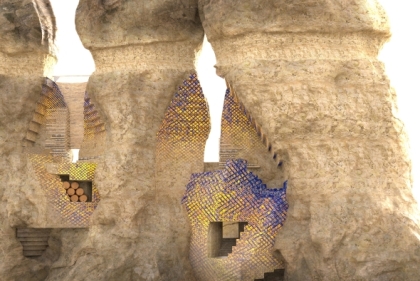
Stuart Weitzman School of Design 102 Meyerson Hall 210 South 34th Street Philadelphia, PA 19104
215.898.3425
Get Directions
Get the latest Weitzman news in your Inbox:
Field notes: the future of new york city’s abandoned island.
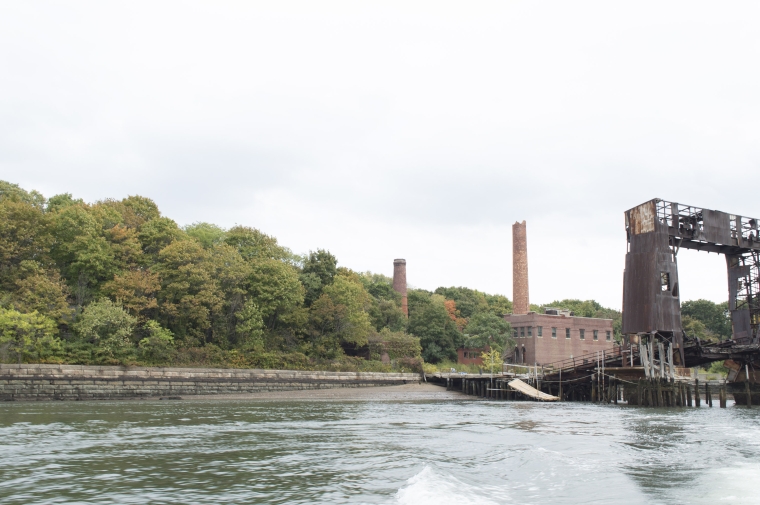
The gantry and beach provided an access point to North Brother Island. The smokestacks are the most visible built fabric from the Bronx shore. Photo by Andrea Haley.

The view southwest to Hell's Gate Bridge and Manhattan from North Brother Island. Photo by Andrea Haley
Student Evan Oskierko-Jeznacki takes a picture of the overgrown Nurse's Home. Photo by Andrea Haley.
The Tuberculosis Pavilion is the largest building, located on the north of the island, amid tall trees, giving the area a cathedral-like feeling. Photo by Andrea Haley.
The paths, which follow the historic streets, are periodically unearthed by NYC Parks. Metal curbs, lamp posts, and fire hydrants all show the history of the island, but are overgrown by the ecology. Photo by Andrea Haley.
Subscribe to e-News
- City & Regional Planning
- Historic Preservation
- Landscape Architecture
- Weitzman News
Michael Grant [email protected] 215.898.2539
Even as the Spring semester is now in full swing, work from the Fall is not forgotten. Yimei Zhang (HSPV/CPLN '16) writes about a site visit to North Brother Island for Fall HSPV Studio 701. The work on North Brother Island continues through PennPraxis and in the thesis of student Angelina Jones ( HSPV/LARP '16) .
On November 13th, the North Brother Island Studio group led by Professor Randall Mason and accompanied by conservation specialist Andrew Fearon , structural engineer Justin Spivey , and landscape architect Nicholas Pevzner , embarked on a second field trip to this abandoned island just south of the Bronx in New York City. Originally named “Gesellen”, meaning “fellow” or “companion” in Dutch, North Brother Island, and its smaller neighbor South Brother Island, was part of a land grant to James Graham in 1695. The history of the two islands started to diverge in late 19th century. South Brother was privately owned until 2007, while North Brother served as quarantine site of communicable diseases from 1880 to 1944, and later as student housing for veterans after World War II. When the housing lease ended in 1951, it was repurposed as a teenage drug addiction center until 1963, when it was abandoned and has been closed to public ever since. Now, North Brother is monitored by New York City Audubon as a bird refuge, and overseen by the New York City Department of Parks and Recreation as a “Forever Wild” site. Reforestation work is underway to bring back harbor herons, which use islands around New York City for nesting and foraging, but haven’t been nesting on North Brother recently. Unlike the first visit on a rainy October day, the group was greeted with nice weather. Also visiting the island were community members and local photography students from The Point CDC , staff from NYC Parks, and Councilman Mark Levine. Local press from NY1 and The Bronx News 12 joined as well. The group once again boarded boats at Hunts Point Riverside Park, provided and captained by the local non-profit Rocking the Boat . Visiting the island a second time was an experience no less powerful than the first one. After landing on the gantry, you are first struck by the view of Manhattan looking southeast. Then as you enter the island, you see dappled sunlight from the dense tree canopy, overgrown vegetation wrestling with the building fabric, and paths appearing and disappearing, covered with thick vines and fallen leaves. You hear the crunch of dry leaves with every footstep, the wind blowing through, and the planes from nearby LaGuardia Airport flying overhead. If you take a look at the site plan and historic photos of the island, you would be amazed by its charm half a century ago and awed by the power of nature that caused the dramatic change in landscape. When you learn about how the island was once expanded with landfill (which created disturbed soil), and clear-cut with ornamental plantings (which led to invasive species overtaking the island today) you start to think beyond what you see and consider the relationship between humans and nature. How can this 20-acre island serve the people of South Bronx as well as the whole city? What do we want people to get out of the experience on the island? How is access balanced with the need to protect ecological resources? How do we deal with the safety issues posed by architectural ruins? These are some of the key questions the studio is trying to answer. After a semester’s hard work, the studio group has drafted a 20-year phased plan for the island, allowing for limited public access to fully realize the ecological, architectural, and historical values of the island. The plan proposes integrating the different values of the island, stabilizing the ruins to allow for safe access, and preserving its unique experience. Group members also worked on individual projects to address specific aspects of the plan, including providing a virtual tour , assessing the impact of sea level rise, studying the paths and circulation system, evaluating the feasibility of creating a management entity for the island, and more. The study of North Brother Island will carry on next semester and be finalized by PennPraxis into a Public Access Plan and Landscape Conservation Study.
Yimei Zhang is pursuing a dual degree in City Planning and Historic Preservation, and is now in her third and final year in PennDesign. She holds a Bachelor of Economics from Beijing Foreign Studies University. Her interest of historic preservation lies in bridging planning and preservation strategies, so that preservation can be used as a powerful tool to regenerate urban neighborhoods, empower local communities, and make better, livable places.
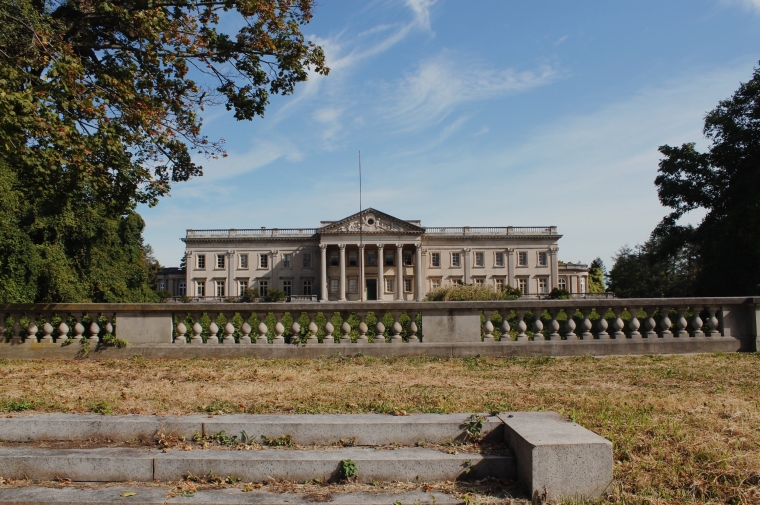

North Brother Island – Abandoned Quarantine Facility in New York
North Brother Island, located on the East River between the Bronx and Riker’s Island in New York, is a place with a dark history.
Not only is the island home to the worst loss of life in New York’s history until Bin Laden’s terrorists attacked the twin towers, but it has also been the chosen location to treat typhoid sufferers, tuberculosis victims, and house WWII veterans, and drug addicts.
Now, the entire island sits abandoned. The once-grand Victorian buildings are in ruins, choked by the undergrowth that now commands the land.
Entering is by authorization of the Parks Authority; only dark tourists with a good reason can set foot on the island legally.
History of North Brother Island
The island was uninhabited until 1885. At this point, the city purchased the island so they could relocate the old Riverside Hospital on Roosevelt Island, to a brand new building on North Brother Island.
The hospital was designed for the unfortunate souls suffering from contagious diseases. Closed off to the mainland, patients were victims of diseases such as typhus, tuberculosis, yellow fever, and smallpox.
“Typhoid Mary” Mallon
The most famous resident at the hospital was one “Typhoid Mary” Mallon . She was the first documented asymptomatic carrier in the U.S of the bacteria that causes typhoid fever.
Mallon was quarantined at Riverside Hospital in 1907 after seven households where she had worked as a cook had typhoid fever outbreaks.
Doctors at the hospital concluded that Mallon carried the bacteria, despite having no typhoid symptoms.
After 3 years of quarantine she was released in 1910, and told not to go back to being a cook; advice she duly ignored.
Before long there were typhoid fever outbreaks wherever she took up residence. By 1915 she was back at North Brother Island, where she ended up spending the rest of her days in strict quarantine. She died at the hospital from pneumonia in 1938.
- Related Content: Poveglia Island – Former Plague Station in the Venetian Lagoon
General Slocum
A few years before Mary first stepped ashore, the island hit the headlines due to the tragic loss of life involved in a boating disaster.
On June 15, 1904, a steamship called General Slocum burst into flames and sank in the East River beside North Brother Island.
Many of the hospital staff assisted in the rescue, jumping into the waters to drag some of the 321 survivors to safety.
1,021 passengers died, however, their bodies washed up onto the shore of the island for days afterward.
New York would not experience a larger loss of life from one incident until 2001.
North Brother Island after WWII

During WWII a tuberculosis facility was opened on the island. However, within a handful of years the widespread use of the tuberculosis vaccine after 1945, meant that the center was deemed obsolete.
Repurposed as residential relief for WWII veterans and their families, the island attempted to assist in Manhatten’s increasingly dire housing situation by accommodating those returning from the now silent battlefields of Europe.
Once the housing shortage was no longer a problem, the island was abandoned until the 1950s. Its next incarnation would be as a center to treat adolescent drug addicts.
Controversy would surround this, however. Heroin addicts were confined much like the quarantine victims of old. Locked in a room until they were clean, many suffered greatly, believing they were being held against their will.
Bad press, undesirable results (drug addicts often left in the worst condition than their arrival) and staff corruption forced the facility to close in 1963.
North Brother Island has been abandoned ever since. It is now a bird sanctuary for Black-Crowned Night Herons.
Where is North Brother Island?
- Related Content: Inside Saint Elmo, Colorado’s Best Preserved Ghost Town
Visiting North Brother Island

North Brother Island is a protected area. Authorized access to the island is rare. The Parks and Recreation authority does consider requests for entry under specific conditions, however.
Access is available within allowable time and should be for “compelling academic and scientific purposes”. They have a form on their website for applicants , (although no visits are taking place during the current coronavirus outbreak).
In non-COVID times the island is closed between March 21 and September 21, due to the shorebird breeding season.
Illegal entry is possible of course. You just need to be good friends with a boat owning local, or a willing to kayak across to the island.
Beware, however, police do patrol the waters of the East River, (Rikers Island Correctional Institute is less than a mile away).
What you can expect to see on North Brother Island

Should you get permission to access North Brother Island you are in for a treat. The eerie, abandoned location is a dark explorers dream.
The island is accessible only by boat, with the most convenient departure point from New York, being Barretto Point Park in the South Bronx.
Assuming you have contacted the park authority about your trip, one of their escorts will be joining you for the day.
Pulling up to the island you will see the first signs of the aged dilapidation. Broken dock supports protrude from the water like the blackened, rotten teeth of a hobo.
What once was a bustling port for the disembarking of hospital workers and supplies is now covered in kelp and almost totally submerged during high tide.
Leaving the boat and walking onto the island, your path is immediately impeded by the encroaching overgrowth.
Remnants of streets and sidewalks can barely be traced beneath the thick tentacles of weed and trees. The island’s sub-canopy is choked with native plants of all sizes.
One of the first buildings you reach from the dock is the morgue. The cracked chimney juts above the treeline, visible long before you reach the ruined walls of the facade.

The buildings are off-limits mind you, your Park official will ensure that you comply. Everything is in a dangerous state of disrepair and it is easy to see why you are not allowed.
Still, looking through the glassless windows and broken doors it is possible to see the equipment left behind after the last inhabitants abandoned the island in 1963.
Rusted bed frames are stacked against walls, and rotted cupboards, chairs, and shelves are strewn around the floor.
There’s also a few signs of illegal entry; faded graffiti adorns the crumbling plasterboard throughout the facility.
Ivy too dominates here, a double tennis court is all but visible beneath the dull, green stranglehold.
One impressive building seems relatively intact. During the years North Brother Island was a hospital, many of the workers opted to live in the Nurse’s Home rather than shuttle back and forth on the ferry.
Here, the 40,000-square-foot Victorian-style mansion offers tantalizing evidence of what life was once like. A large porcelain bathtub and colored tiling can be seen in one of the downstairs bathrooms.

Further on, you will come across The Staff House. Constructed in 1885, this is one of the oldest (and most dilapidated) structures on the island.
Beyond this is the Male Dormitory, built the same year it now has collapsed ceilings and trees growing through the roof.
The largest building that still exists is the Tuberculosis Pavilion. This sprawling four-story, 83,000-square-foot building was the last structure to be completed on North Brother Island.
It is here that World War II veterans were housed in the aftermath of the war. This large, brooding building oozes with post-apocalyptic gloom.
Moving on and in places, the foliage is too thick to allow passage. After everyone left almost six decades ago, the island has been left to mother nature.
To this day, the city seems unsure of what the future will bring here. For now, the authorities are content to allow this (somewhat prime) real estate to be the domain of history and as a bird sanctuary, which is the role it officially has now.
That being said, North Brother Island may never see redevelopment for the purpose of human habitat.
The land is ground-zero for rising sea levels. According to extreme climate change projections, the island will be completely underwater by 2100.
Featured Image: reivax from Washington, DC, USA / CC BY-SA 2.0
If you’ve visited a strange or unusual destination that you think our readers will want to know about, we would love to hear from you.
The Lucky Dragon Incident & Bravo Nuclear Tests

How to Visit Grytviken Whaling Station, South Georgia

Diefenbunker Museum – Canada’s Cold War Relic

Visiting the ATM cave in Belize (Home of the Crystal Maiden)

Follow us on Instagram!
I have an insatiable wanderlust for the extraordinary. Born with an adventurous spirit, I have spent over the past decade exploring the far reaches of our planet, seeking out the strange and mysterious.
Leave a Comment Cancel reply
You must be logged in to post a comment.
Privacy Overview
Privacy Policy - Contact - Terms and Conditions
- Film and TV
To make sure you never miss out on your favourite NEW stories , we're happy to send you some reminders
Click ' OK ' then ' Allow ' to enable notifications
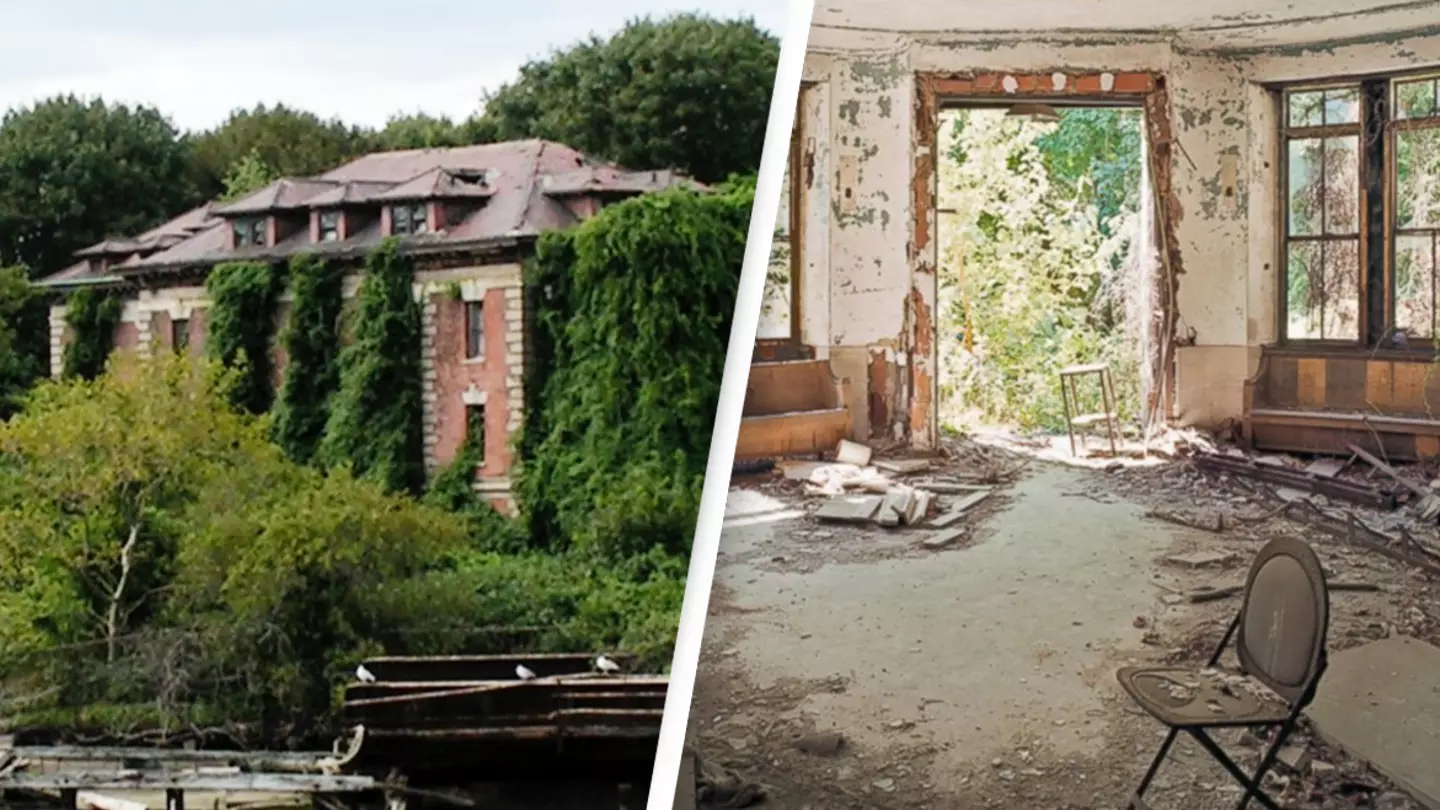
Mysterious island near New York has been abandoned for over 50 years and nobody is allowed to visit
North brother island is a land nobody can visit.
Britt Jones
There's always something amazing found around the world, especially now that we have social media to bring to light forgotten relics.
For instance, this abandoned island has been sitting less than a mile from Manhattan since 1614 but was evacuated in 1963.
The North Brother Island is a mysterious 22-acre plot of land which is situated close to Rikers Island prison complex near the South Bronx’s industrial coats.
But you’ll never get to visit.
This is because it was swiftly packed up and abandoned after a short stint as a drug rehabilitation centre that didn’t work out and is now far too hazardous to step foot on.
It's completely illegal for the public to set foot on North Brother Island and South Brother Island without permission from the New York City Department of Parks and Recreation because of the dangers, as well as the fact it is a certified bird sanctuary.
Though you can’t step foot on the island , it doesn’t mean you can get a glimpse of the ruins.
In 2017, the Science Channel was able to get permission from the city to visit the island and the crew invited Business Insider to tag along.
As part of the What on Earth? TV series about satellite images, North Brother Island was featured in season four.
Here's a peak at what they saw.
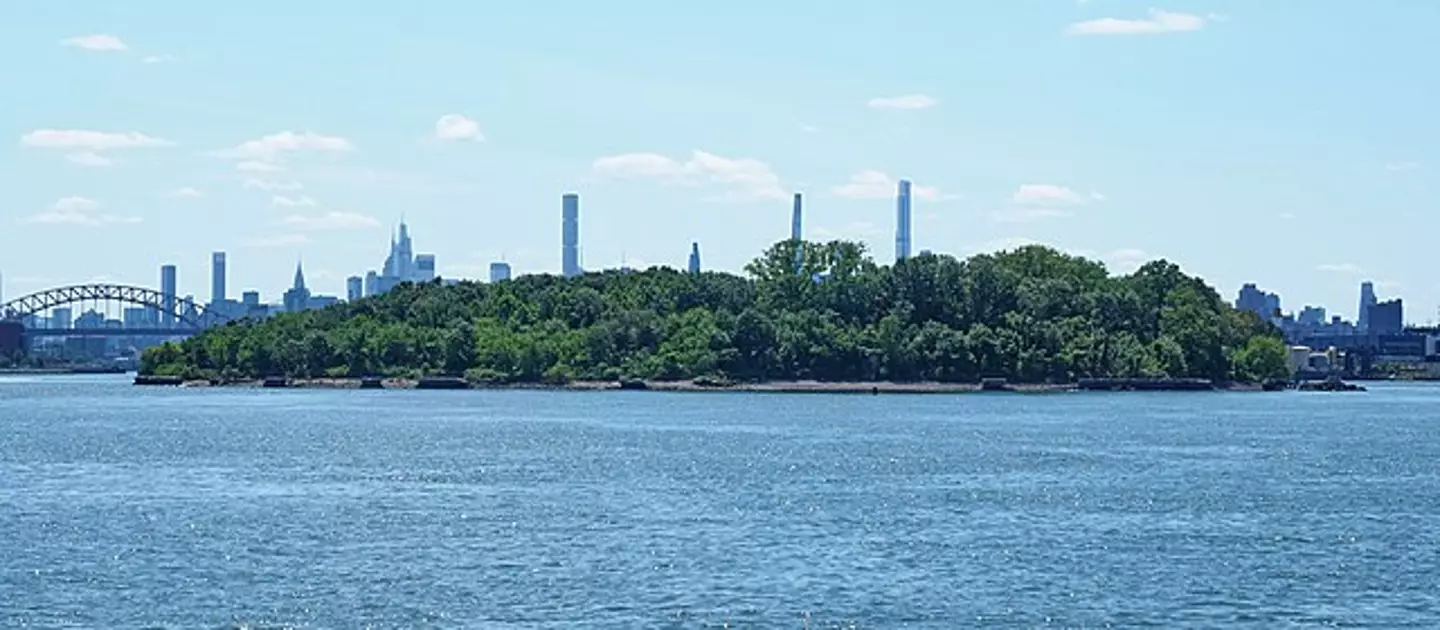
As the island is only accessible only by boat, it’s a little tricky to get there and an escort absolutely has to accompany you on your visit.
So, it’s not going to be an easy journey.
When stepping foot on the island , there's rot and rust everywhere due to its abandoned state.
But the gloomy history of the island runs a lot deeper than just a failed rehab facility .
For example, in 1904, a steamship called the General Slocum burst into flames and sank in the East River, killing 1,021 passengers.
There was also a long period of time where the city had to quarantine sick people that had caught highly contagious diseases, such as the ‘Typhoid Mary’ Mallon.
Littered with post-war houses and crumbling structures, the island looks as though it’s ready to fall at any moment.
But that moment could come soon.
With sea levels rising to 2.5 metres and hurricanes able to wipe out any occupants , the move to ban people from visiting was a smart idea.
_-_Flickr.jpg)
This post-apocalyptic wasteland is overrun with rubbish, rubble and the Tuberculosis Pavilion.
This 83,000-square-foot building was designed to house people with tuberculosis, until World War II broke out.
Instead of housing sick people, it had to act as a sanctuary for veterans up until it was abandoned.
Though owners of the island tried to reinvent it as a rehabilitation camp for troubled teens between 1952 and 1963, it just didn’t help enough people to be able to remain useful.
With the only inhabitants leaving in 1963, it was left to the city to deal with and according to climate change predictions, it may be entirely underwater by 2100.
This means it may never see another population living on its land again.
Topics: Weird , US News , New York
Choose your content:

Fans say Dua Lipa looks 'unrecognizable' after debuting new look in photo shoot
Dua lipa posed for a new photoshoot with beauty papers magazine, and fans said they could scarcely recognise her.

Father and son revealed to be dating the same woman in new season of 'disturbing' reality show
The reality dating series has raised a few eyebrows with its unusual concept.
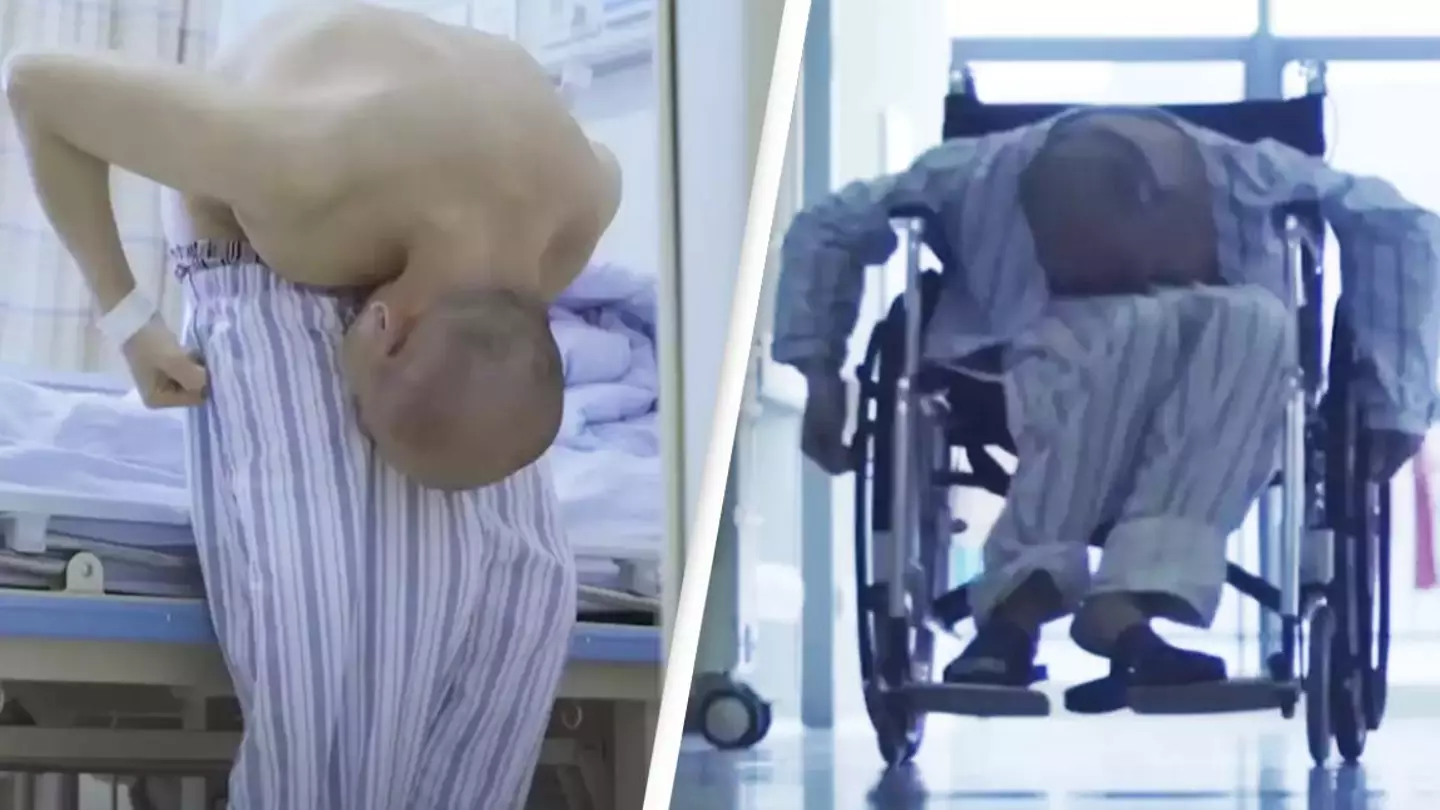
'Folded man' finally gets surgery to stand up straight after 28 years of suffering from rare disease
Li hua lived with a rare condition which meant that his was doubled over for years until a specialist doctor helped him.

Jimmy Fallon felt 'blindsided' and 'embarrassed' after discovering A-list celebrity previously had a crush on him
The tonight show host said his 'face melted' when the star told her story on his show.
- Abandoned island connected to New York City by tunnels that no one is allowed to visit
- Abandoned tilting $272m skyscraper still left half-finished eight years on
- Intern terrified by New York City rent prices commutes weekly from South Carolina to New Jersey
- Imposter does catwalk in trashbag at New York Fashion Week and no one notices until security intervene
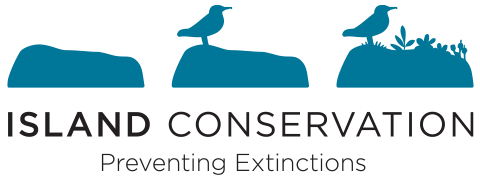
- Why Islands
- Allen Cay, The Bahamas
- Cabritos Island, Dominican Republic
- Desecheo Island, Puerto Rico
- Mona Island, Puerto Rico
- Acteon and Gambier Archipelagos, French Polynesia
- Antipodes Island, New Zealand
- Kaho‘olawe Island, Hawai‘i
- Lehua Island, Hawai’i
- Marquesas Arquipelago
- Midway Atoll, Hawai’i
- Palmyra Atoll, Line Islands
- Republic of Palau
- Tetiaroa Atoll, Fr. Polynesia
- Ulithi Atoll, Micronesia
- Anacapa Island, California
- Hawadax Island, Alaska
- San Nicolas Island, California
- Choros & Chañaral Islands, Chile
- Floreana Island, Galápagos
- Grievance Mechanism
- Juan Fernández, Chile
- Pajaros Uno, Chile
- Pinzón Island, Galápagos
- Mission and History
- Diversity, Equity and Inclusion
- Newsletter Signup
- Impact Reports, 990 Forms, and Audits
- 25 Years of Preventing Extinctions
- Media Resources
- Board and Advisory Council
- Donate Today
- Big Picture
- Climate Change
- Community & Culture
- Island News
- Notes From The Field
- Press Releases and Events
- Science News
- Technology and Innovation
- Beyond Biodiversity
- Island-Ocean Connection Challenge
- Innovation Program
- Conservation Measures
- Genetic Biocontrol
- Publications
- DIISE Database
- TIB Database

North Brother Island: Small but Significant
A small island in new zealand exemplifies the significance of small islands. spanning less than a square mile, north brother island supports rare, endemic new zealand species..
In the middle of the Cook Strait in New Zealand lies the Brother Island formation. North Brother Island is less than a square mile in size, and is the site of a lighthouse that was first established in 1877. This isolated island is far from alluring: the majority of the island is exposed rock and steep cliffs, and there is no fresh water. Convincing lighthouse keepers to remain posted was a challenge until the lighthouse converted to automated solar-power in 1990. Even though mankind has vacated this barren rock face, North Brother Island continues to provide refuge for endangered New Zealand species. Luckily, the New Zealand Department of Conservation (DOC) has declared the island a restricted-access wildlife sanctuary.

The North Brother Island lighthouse is now automatically operated, so the island is no longer inhabited. Credit: Mike Fitzpatrick
North Brother Island is home to the New Zealand endemic Tuatara ( Sphenodon punctatus ). Although these reptiles resemble lizards, they belong to a different lineage. The Tuatara are members of the order Rhynchocephalia, which was distinguished during the age of the dinosaurs over 200 million years ago. The Tuatara is the only living species of this order left in existence. This ancient reptile is usually 1.5 feet (45 centimeters) in length, and is only found on islands offshore of New Zealand. The introduction of rats onto these islands, where they become invasive, has presented a threat to the Tuatara populations. Rats prey upon small seabird fledglings and eat the eggs of nesting seabirds. Additionally, the presence of seabird colonies on islands promotes nutrient rich soil, which attracts small invertebrates, insects and vegetation that provide food for the Tuatara. The removal of invasive rats and the protection of native species has greatly contributed to the growth of island Tuatara populations.
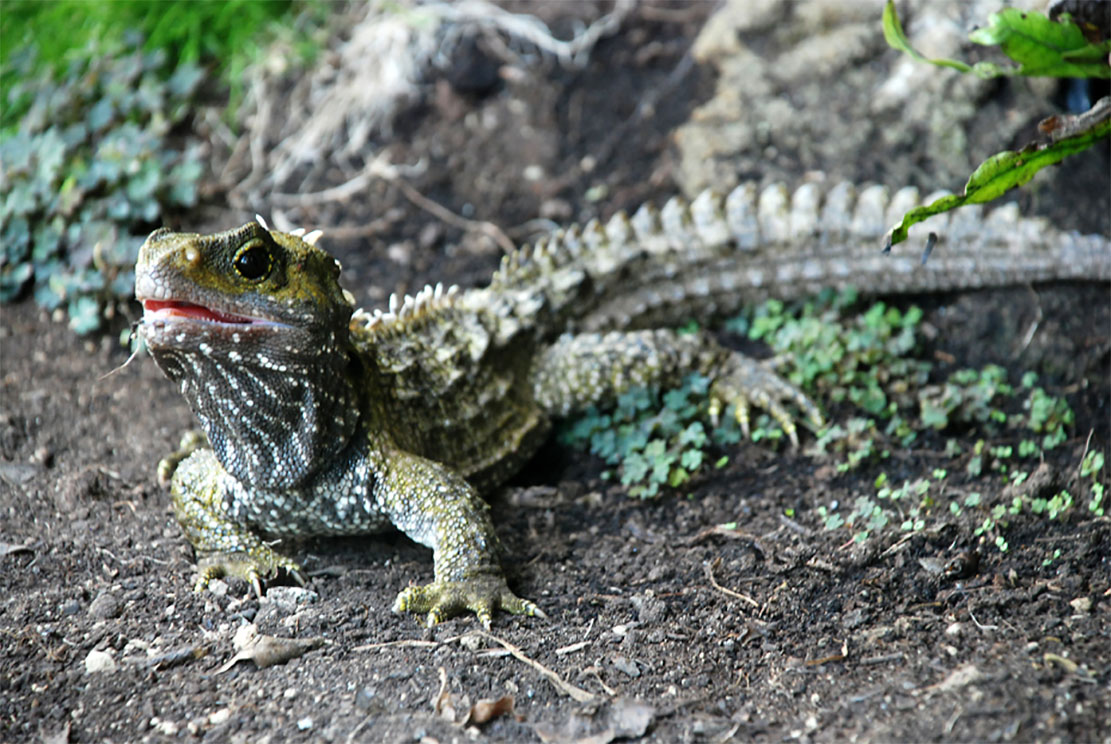
In Māori, Tuatara means “peaks on the back.” Credit: Geoff Wilson
The small size of North Brother Island makes its native plants and wildlife especially susceptible to the perils of invasive species. All surveying equipment undergo a quarantine procedure to ensure no persistent invasive species infiltrate the island, so as to maintain the stability of native populations. On the other hand, North Brother Island’s small size makes invasive species removal a much more achievable task for a small team. During the most recent weed assessment, the NZ Department of Conservation (DOC) and several volunteers were looking for invasive Tree Mallow, Orache and the Brome grass. Fifteen years ago, the island was overgrown with tree mallow, which disrupted seabird nesting sites and interfered with the growth of native plant species as well. The removal of invasive plants has also promoted reclamation from the rare Dryland Sow Thistle ( Sonchud novae-zelandiae ), a dandelion that only exists on two islands in New Zealand.
Small islands such as North Brother remind us that bigger does not always mean better. Small islands around the world serve as sanctuaries for endangered and endemic island species. When evaluating the conservation needs of island species, scientists often have to consider small offshore rock formations as well. The Lord Howe Stick Insect was declared extinct in 1920, but a small population was discovered in 2001 on a rock face 14 miles offshore of their native habitat, and the Stick Insect is now part of a captive breeding program at the Melbourne Zoo.
Thanks to the DOC, the small but significant North Brother Island can be a safe place for New Zealand native species.
Featured photo: Tuatara. Credit: Bernard Spragg. NZ Source: Stuff.co.nz
- Author Details
Leave a Reply
Save my name, email, and website in this browser for the next time I comment.

Islands are our best hope for curbing the extinction crisis.

Follow Island Conservation on Social Media
[ism-social-followers list='fb,tw,li,youtube,instagram' template='ism_template_sf_1' list_align='horizontal' display_counts='false' display_full_name='true' box_align='center' ]

The ISLAND-OCEAN CONNECTION CHALLENGE aims to maximize the marine benefits of island conservation for ecosystems including coral reefs, and climate and community resilience. We are launching a new era of island restorations and rewilding focused on scaling and deploying this whole-systems conservation ‘multi-tool’ for optimal impact.
Challenge partners are committed to the holistic restoration of at least 40 globally significant island ecosystems, from ridge-to-reef to benefit biodiversity, climate, and communities by 2030.
We seek additional partners to join this collaborative and advance this novel restoration and resilience effort. Join this movement by adding your commitments, resources, projects, programs, and / or islands to this 2030 challenge.
Join us today in this campaign of hope and resilience!
Sample commitments.
Any individual or organization (local, national, regional, or global) is invited to become a member provided you commit to a significant (for you) commitment to advance the vision and call to action of The Island-Ocean Connection Challenge. Here are some commitment examples to inspire your thinking.
- Commits to engaging the local community in development, implementation, and conservation impact monitoring of ___ (number) of community-led island restoration projects in partnership with other groups.
- Commits to restoring ____ islands by 2030 with their communities, national, regional, and global partners
- Commits to prioritizing $____ in bi- and multilateral funding to advance these projects.
- Commits to helping five SIDS to mainstream this conservation multi-tool for the benefit of communities, corals, and climate by helping execute x number of island restorations and commits to $____ in co-financing
- Commits to support xx island restoration project partnerships with $____ in unilateral co-financing
- Commits $____ to advance xx priority island restoration projects
- Commits to ____ partnerships with xx expert human resources and $____ to advance xx priority island restoration projects
- Commits to supporting long-term research on ____ island restoration projects to further elucidate the scale and scope of the island-ocean connections to further maximize the coral, community, and climate benefits of island restorations
- Develop a central repository for standardizing, compiling, consolidating, and analyzing conservation impact monitoring data from island-marine restoration projects worldwide.

19 Places That People Are Forbidden to Visit
F or the most part, the world is your oyster. However, some places exist in the world that people are forbidden to visit. Some governments ban places because they’re dangerous to people, or humans are dangerous to the animals and habitats nearby. Others hold secrets governments and individuals definitely want to keep from the public.
If you want to learn more about these forbidden places, you’ll have to keep reading below.
1. Ducle Base
This article is starting with a pretty controversial one. Certain groups claim that under Dulce, New Mexico, there’s a hidden base for the US government. According to conspiracy theorists, there’s a compound somewhere near the town that is host to all sorts of experiments, or even aliens. If true, it would be the ultimate forbidden place.
2. Poveglia Island
This island has a heavy history filled with death. It was once used as a quarantine station for the plague, holding over 160 thousand people on the island. In 1922, Italy used the island as a mental hospital. There were rumors it was corrupt and the doctors often tortured the inhabitants. It’s one of the most haunted places on earth, and the soil is at least 50 percent human remains, according to certain statements.
3. North Brother Island
Like Poveglia Island, North Brother Island started as a quarantine hospital. The United States designated the island for those with typhoid and was home to Typhoid Mary. Then, it became a rehabilitation center. After the center was shut down, North Brother Island became a bird sanctuary.
4. Heard Island
There are two volcanoes, still active, on Heard Island. But that’s not what makes the island forbidden. The island is protected as a nature reserve. The government only allows people to visit the island for scientific research.
5. Bohemian Grove
Bohemian Grove is 2,700 acres. It’s an extremely private gentleman’s club where some of the most prominent men in the world get together and talk. Friends and family members are allowed on occasion, but they must follow the rules closely and be off the property by a specific time.
6. Ise Grand Shrine
To protect this temple, only the royal family is allowed to enter, and only on rare occasions. There is one other exception. About every 20 years, the temple is rebuilt to maintain its strength and Shinto traditions.
Area 51 isn’t entirely forbidden. No standard citizen has a chance of entering the gates. Only specific government bodies, like high-level scientists and the military, are allowed in the base. Rumors say that the base is home to new weapons for the army, or perhaps a site for extra-terrestrial research.
8. Snake Island
This is an island you probably wouldn’t want to go to, even if you could. The Brazilian government has banned travelers due to how deadly the island is. This island earned its name by having the highest concentration of pit vipers in the world.
9. Surtsey Island
The reason Surtsey is forbidden is because of its scientific significance. It’s the newest landform in the world created by volcanoes, breaking the surface in the 1960s. Only scientists researching the island have permission to visit.
10. Tomb of Qin Shi Huang
There is still a lot to discover about this tomb and the soldiers that have remained standing for over 2,000 years. To respect the site, the Tomb Qin Shi Huang has been blocked by the government and no excavation is allowed.
11. The Vatican Secret Archives
The Vatican Secret Archives aren’t actually a secret. They’re just incredibly private. The archives hold all sorts of information related to the Pope and the history of the church and religion. The Vatican permits some researchers and members of the church, but that’s it.
12. Gruinard Island
The government bought Gruinard Island with the specific purpose of testing war weapons. Specifically, they tested a form of anthrax on the island. Though the weapons ended up never being used in the war, the weapons were tested on the island. The island is supposedly safe now , but is still not open to the public thanks to a private buyer.
13. Niihau Island
There are roughly 160 people on Niihau island, but only this group of people and the US Navy are allowed on the island. The owners of the island promised to use the land to protect the traditional Hawaiian language and culture.
14. Pravcicka Brana
The Pravcicka Brana is a naturally formed arch. It used to be a huge tourist attraction. However, the constant walking over the arch by tourists has eroded the structure. It’s ready to collapse at any time, and due to the danger, is forbidden.
15. Coca-Cola’s Vault
Though the vault is located in a fairly popular tourist attraction for fans of the soda, the vault itself is forbidden. This is supposedly because it’s the location of the recipe for Coca-Cola, a closely guarded secret.
16. Mezhgorye
Though this is technically just a town in Russia, it’s top-secret and forbidden to anyone not personally approved by Vladimir Putin. No one knows for sure what’s there, but some say that it’s home to nuclear weapons.
17. North Sentinel Island
North Sentinel Island isn’t home to anything secretive. However, it is very dangerous. It’s home to one of the last communities not touched by modern civilization. These people are heavily protected because they’ve gathered no immunity from our modern diseases. Interactions with the islanders could lead to a high rate of death and infection.
18. Lascaux Caves
For many archaeologists, there’s nothing more interesting than the cave paintings in Lascaux Cave. They are over 17,000 years old. The caves had to be closed off to the public as the high levels of heat and carbon dioxide in the caves damaged the paintings.
19. Svalbard Global Seed Vault
Svalbard Global Seed Vault is home to over 900 thousand seeds from all over the world. The main purpose of this storage vault is to have seeds in case humans manage to kill off all life on Earth. It’s also great for studying plants that are extinct or going extinct.
Summary of Places People Are Forbidden to Visit
Love Animals as much as we do? Make sure to Follow and Like us on MSN. Have feedback? Add a comment below!
- The 75 Most Iconic Places Around the World – In Alphabetical Order by Continent!
- 9 Absolutely Bizarre Laws in Oregon That Are Still Against the Law
- 23 Absolutely Bizarre Laws in New York That Are Still Illegal
The post 19 Places That People Are Forbidden to Visit appeared first on A-Z Animals .
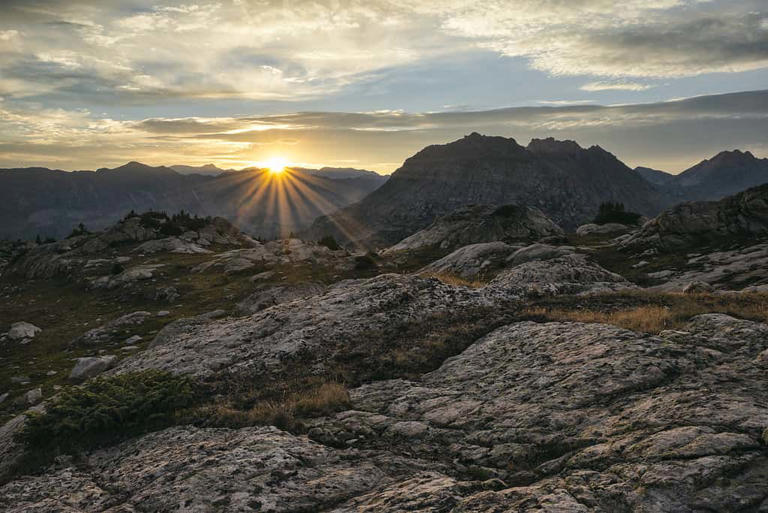
Ukraine-Russia war latest: At least four dead in daytime missile strike on port city - as massive building on fire
It is likely to be a "very difficult summer" for Ukrainian forces in the face of increased Russian attacks, military analyst Sean Bell says. Listen to a Daily podcast on whether the UK should send troops to Ukraine as you scroll.
Monday 29 April 2024 22:48, UK
- At least four killed in daytime missile attack on Odesa
- Watch: Massive building in flames after attack
- Ukraine in for 'difficult summer' as Russia preparing 'major offensive'
- North Korea expresses 'concern' over US sending long-range missiles to Ukraine
- Explained : Why is Chasiv Yar the next target for Russia?
- Your questions answered: Will Ukraine launch another spring offensive?
- Big picture : What you need to know as a new week begins
- Listen to the Sky News Daily above and tap here to follow wherever you get your podcasts
As we reported a short time ago, the Duchess of Edinburgh has met with Volodymyr Zelenskyy in Ukraine, in what marks the first visit to the country by a member of the Royal Family since the war begin.
Sophie met the Ukrainian president and first lady Olena Zelenska and delivered a message to them on behalf of the King, Buckingham Palace said.
You can watch footage from her trip here...
Throughout the day, we've been reporting on a Russian attack on the city of Odesa in Ukraine, which has killed at least four people.
These images show a burning educational institution building, which was struck.
Airline Finnair has said it is pausing flights to Tartu in eastern Estonia for the next month, due to GPS disturbances in the area.
"Finnair will suspend its daily flights to Tartu, Estonia, from 29 April to 31 May, so that an alternative approach solution that does not require a GPS signal can be put in place at Tartu Airport," the Finnish airline said in a statement.
Finnair last week had to divert two flights back to Helsinki after GPS interference prevented the approach to Tartu airport, although a spokesperson said the company did not now where the interference came from.
However, Tallinn seems certain as where the issues are originating.
"It is a fact that Russia affects GPS devices in our region’s airspace," Estonia's foreign minister said via a spokesperson.
Margus Tsahkna added that Estonia will raise the issue of GPS interference with its neighbours, and intends to discuss it with the EU and NATO.
GPS jamming and spoofing have grown worse in eastern Europe, the Black Sea and the Middle East, all areas close to conflict zones, according to industry group OpsGroup.
More than 30 Ukrainian conscripts have died while trying to cross the border illegally to avoid mobilisation, a Ukrainian official has said.
Andriy Demchenko, spokesman for the State Border Guard Service, told Ukrinform that some men are prepared to pay "large sums" of money to groups promising to smuggle them across the border safely.
"Then they are faced with the fact that the route runs along a mountain river," he said.
Many conscripts have lost their lives after realising they didn't have the strength to swim the river, Mr Demchenko added.
"In total, since the beginning of the full-scale invasion, about 30 people have died trying to cross the border illegally," he said.
Such attempts occur "every day", he said.
For context: Ukraine has been under martial law since the Russian invasion in February 2022.
It lets draft officers call up men of a certain age to fight on the front line.
In April, Volodymyr Zelenskyy signed off a new law lowering the age of draft-eligible men from 27 to 25, in a bid to boost troop numbers in his depleted ranks.
The Duchess of Edinburgh has met with Volodymyr Zelenskyy in Ukraine, in what marks the first visit to the country by a member of the Royal Family since the war begin.
Her visit is aimed at demonstrating "solidarity with the women, men and children impacted by the war and in a continuation of her work to champion survivors of conflict-related sexual violence", the palace said.
Three women and a man have died after a Russian attack on Odesa.
A further 28 people have been injured, including two children aged five and 16. A pregnant woman has also been hurt.
This video shows the aftermath of the attack.
Debris recovered from a missile that landed in the Ukrainian region of Kharkiv on 2 January was North Korean, the Reuters news agency is reporting.
Citing a United Nations sanctions monitor, Reuters said debris recovered was from a Hwasong-11 series ballistic missile - made in North Korea.
Three sanctions monitors travelled to Ukraine earlier this month to inspect the debris - and found no evidence that the missile was made by Russia.
They "could not independently identify from where the missile was launched, nor by whom".
"Information on the trajectory provided by Ukrainian authorities indicates it was launched within the territory of the Russian Federation," they wrote in an April 25 report to the UN Security Council's North Korea sanctions committee.
"Such a location, if the missile was under control of Russian forces, would probably indicate procurement by nationals of the Russian Federation," they said, adding that this would be a violation of the arms embargo imposed on North Korea in 2006.
International leaders have long accused North Korea of supplying Russia with weapons.
Both Moscow and Pyongyang have denied the accusations, but vowed last year to deepen military relations.
The situation in Odesa is fast-moving after the city in southern Ukraine came under Russian missile attack this afternoon.
Three women and a man have died, bringing the total number of people killed to four, according to regional governor Oleg Kiper.
He said a further 28 people have been injured, including two children aged five and 16. A pregnant woman has also been hurt.
Four people are "fighting for their lives," he said in a Telegram post .
A big building housing part of the Odessa Law Academy is ablaze after the strike...
The number of people injured in Russia's missile attack on Odesa has increased.
Regional governor Oleg Kiper said he was aware of 17 injured people, of whom at least two are in a "serious condition". Separately, Odesa mayor Gennadiy Trukhanov said at least 20 people were hurt.
Emergency services continue to work at the scene, Mr Kiper said. Earlier, he reported that at least two people had been killed in the attack (see 17.46 post).
The Odesa region has been repeatedly targeted by Russia during the war.
Last month, a Russian ballistic missile attack on a residential area killed at least 20 people and wounded more than 70.
Ukrainian troops are still defending their positions on the frontline while grappling with depleted weapons supplies and increased Russian attacks.
Western support is on full display in the pictures below, with soldiers of the Ukrainian army's 25th separate airborne brigade operating a German-made Marder infantry fighting vehicle.
Be the first to get Breaking News
Install the Sky News app for free


IMAGES
VIDEO
COMMENTS
Things To Do Near North Brother Island Visit Edgar Allan Poe's Cottage. Since you can't visit the haunting dilapidation of North Brother Island, perhaps you can console yourself with a trek to a house once occupied by American Gothic master Edgar Allan Poe. The writer moved to the cottage in 1846, hoping the then-rural country air would ...
Now, it looks as though the city may open yet another long-mysterious islet to visitors. Abandoned since 1963, North Brother Island could soon be opened on a limited basis to curious urban explorers, reports New York magazine. The City Council is working on a proposal to allow New Yorkers to check out the 20-acre space, which sits in the East ...
October 20, 2015 at 5:02 pm. Encore: April 29, 2015. Located across from The Bronx near Rikers Island, is a lesser-known land mass that you might have missed. It's called North Brother Island ...
North Brother Island is a 22-acre piece of land in New York City that has been abandoned since 1963. The island, which is next to the infamous Rikers prison, was a quarantine location 150 years ago.
Dubos Point Wildlife SanctuaryPlayground 174Albert J. Parham PlaygroundP.S. 101Minetta GreenHillside ParkParkP.S. 32West Farms RapidsLeif Ericson ParkWagner Houses PoolP.S. 60P.S. 215Peter Charles ParkFive ParksRodney Park CenterAstoria Houses PlaygroundGivan SquareP.S. 299P.S. 26Recreation Center 54Marcy Green NorthGrand Central Parkway ...
North Brother Island, the 13-acre piece of land that once housed a quarantine hospital, has long been a source of fascination for urban explorers and history nerds. Abandoned since the early 1960s ...
North Brother Island is among the most unexpected of places: an uninhabited island of ruins in New York City that hardly anyone knows; a secret existing in plain sight. It is both part of the city and a world apart from it. Its 20 acres sit low in the East River, just north of Hell Gate, with 25 or so buildings in various states of decay.
TOUR NORTH BROTHER ISLAND. October 21, 2019 at 5:15 am. Encore: July 13, 2022. Tonight, we tour a 20-acre island near Manhattan that sits completely abandoned and closed off to visitors, without ...
To visit the island you must: 1) Contact the parks department. They don't even let themselves visit the island most of the time. March to October is off limits. That's when the herons nest. 2) If the parks department gives you permission, you have to charter a boat, which can be really expensive.
North Brother Island was considered by many to be the ideal site for the new light, but the land's owner, one Edward Ackerson, refused to sell. ... On January 5, 1903, Meade left North Brother Island to visit his mother in New York City, leaving his two brothers who were living at the lighthouse at the time to look after things. When Meade ...
11 October 2017. New York City is a juxtaposition of old and new; a city where modern skyscrapers are set aside historic buildings dating back to the 1600s. There exists pockets of NYC where ghosts lurk, and on the forgotten island of North Brother—resting between the Bronx and Rikers Island—a haunted past remains.
North Brother Island: New York's forgotten time capsule. Arun Starkey. Mon 16 May 2022 19:30, UK. Lying in the middle of New York City's East River, between mainland Bronx and Rikers Island, is a pair of largely forgotten islands that are as much of a part of the area's history as the many bridges that cross the natural harbour of the city.
The twin isles reside between Rikers Island and the Bronx mainland, their upkeep reliant on a mired-down government that wrestled the land out of the hands of New York elite. While North Brother Island has been uninhabited since 1963, only a scarce few have seen South Brother Island's light of day since 1909. The city has intended to make ...
This place is on private property. Listing for informational purposes only. Please do not visit without express permission from the land owner. Ever wonder what Earth will look like 50 years after the apocalypse? Probably a bit like NYC's North Brother Island. It's lain empty in the East River since the 1960s- even the Black-Crowned Night Herons who lived on this once-bustling island have ...
April 30, 2022 Max Moore. Between mainland Bronx and Rikers Island in New York City sit a pair of abandoned islands. There they are, a couple of brothers, sitting empty and unused in the middle of one of the greatest metropolises in the world. But one of them, the bigger brother, North Brother Island, hasn't always been abandoned.
On June 15, 1904, the General Slocum, an excursion vessel on the way to Long Island for a church picnic outing, burst into flames in the East River. Over 1200 lost their lives. Slocum Captain William Van Schaick drove the vessel toward North Brother Island, one of two small islands in the East River between Port Morris, Bronx, and Riker's Island.
June 15, 1904. The PS General Slocum steamship caught fire south of North Brother Island. Its captain ran the ship aground at the southwestern end of North Brother Island. Over 1,100 people aboard perished, many of whom were women and children who'd been on their way to a Sunday school church outing at Locust Grove Picnic Ground.
On November 13th, the North Brother Island Studio group led by Professor Randall Mason and accompanied by conservation specialist Andrew Fearon, structural engineer Justin Spivey, and landscape architect Nicholas Pevzner, embarked on a second field trip to this abandoned island just south of the Bronx in New York City. Originally named "Gesellen", meaning "fellow" or "companion" in ...
September 29, 2020. North Brother Island, located on the East River between the Bronx and Riker's Island in New York, is a place with a dark history. Not only is the island home to the worst loss of life in New York's history until Bin Laden's terrorists attacked the twin towers, but it has also been the chosen location to treat typhoid ...
Check out what North Brother Island looked like back when people were living there—here are photos from the late 1930s to the '60s.
Photos: A Rare, Legal Visit To "Spellbinding" North Brother Island - Gothamist. Gothamist is a non-profit local newsroom, powered by WNYC.
For instance, this abandoned island has been sitting less than a mile from Manhattan since 1614 but was evacuated in 1963. The North Brother Island is a mysterious 22-acre plot of land which is situated close to Rikers Island prison complex near the South Bronx's industrial coats. But you'll never get to visit.
A small island in New Zealand exemplifies the significance of small islands. Spanning less than a square mile, North Brother Island supports rare, endemic New Zealand Species. In the middle of the Cook Strait in New Zealand lies the Brother Island formation. North Brother Island is less than a square mile in size, and is the site of a lighthouse that was first established in 1877. This ...
North Brother Island Like Poveglia Island, North Brother Island started as a quarantine hospital. The United States designated the island for those with typhoid and was home to Typhoid Mary.
There is concern within the international community about the US supplying long-range missiles to Ukraine, North Korea has said. As we report in our big picture post (6.27am post) Kyiv has used ...